
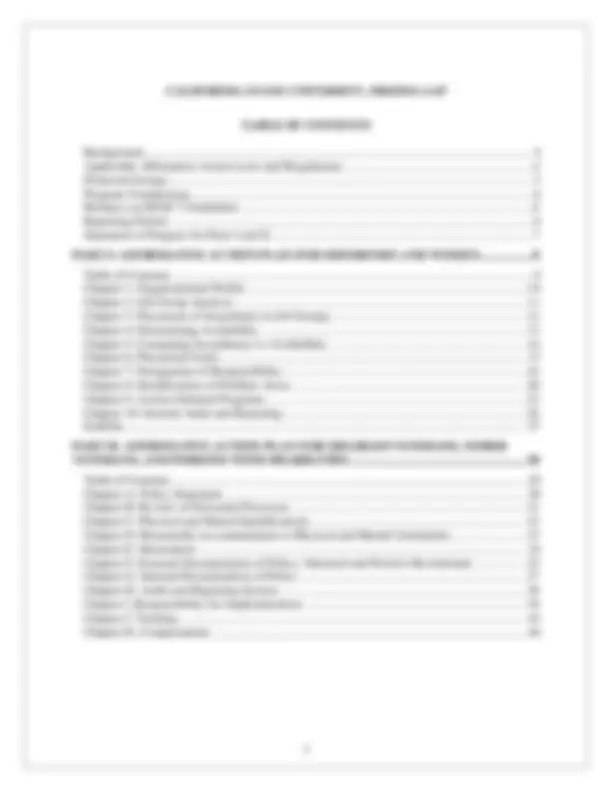
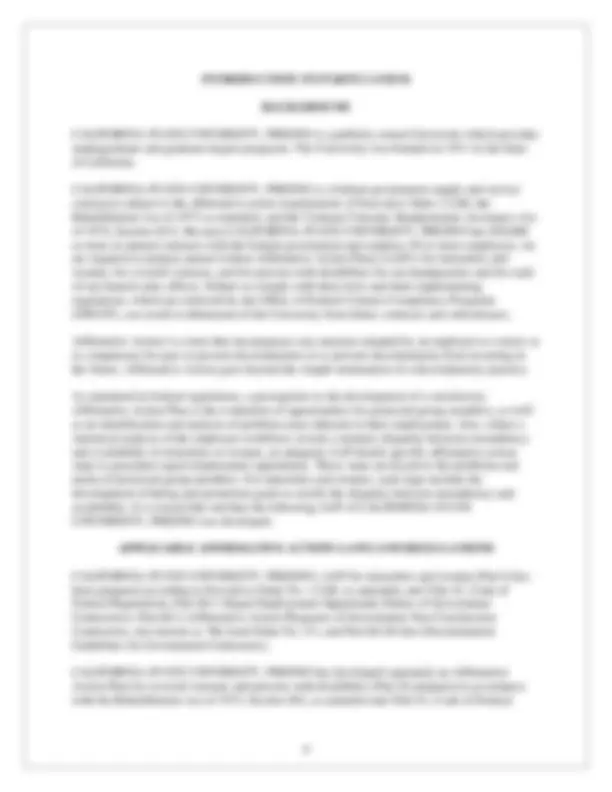
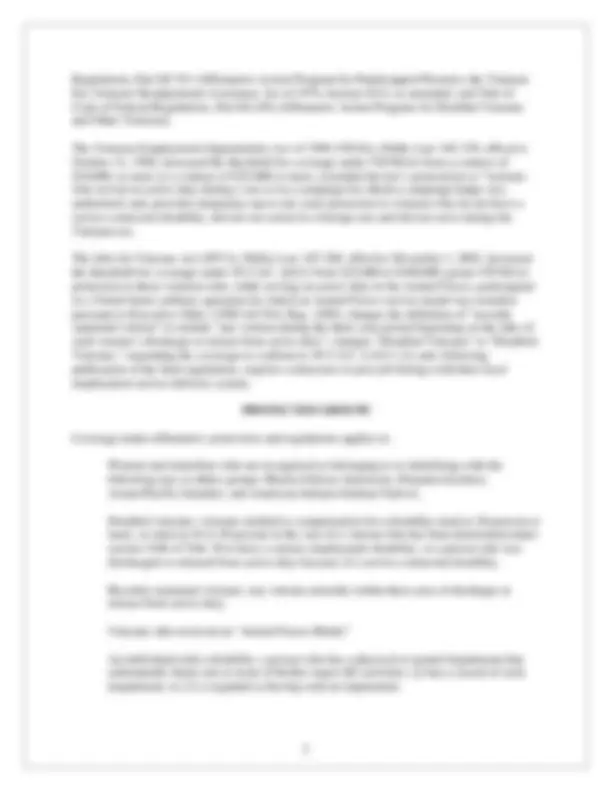

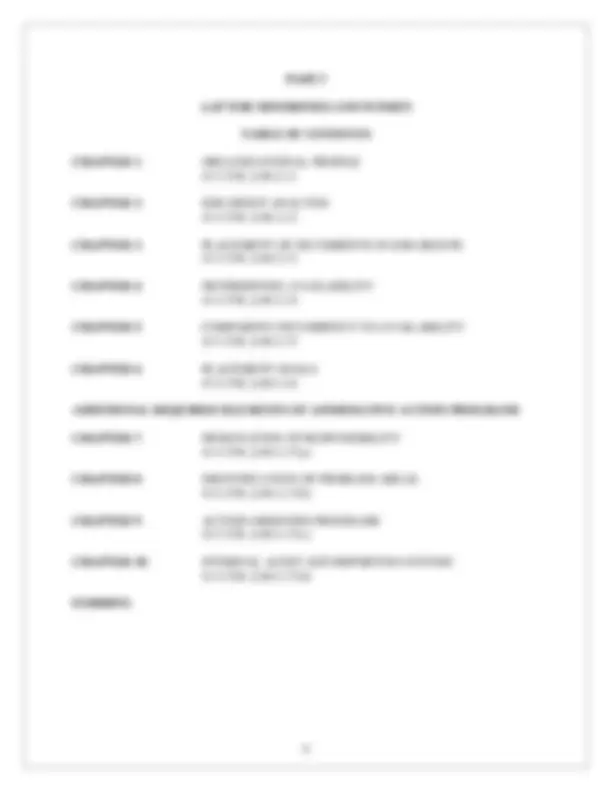
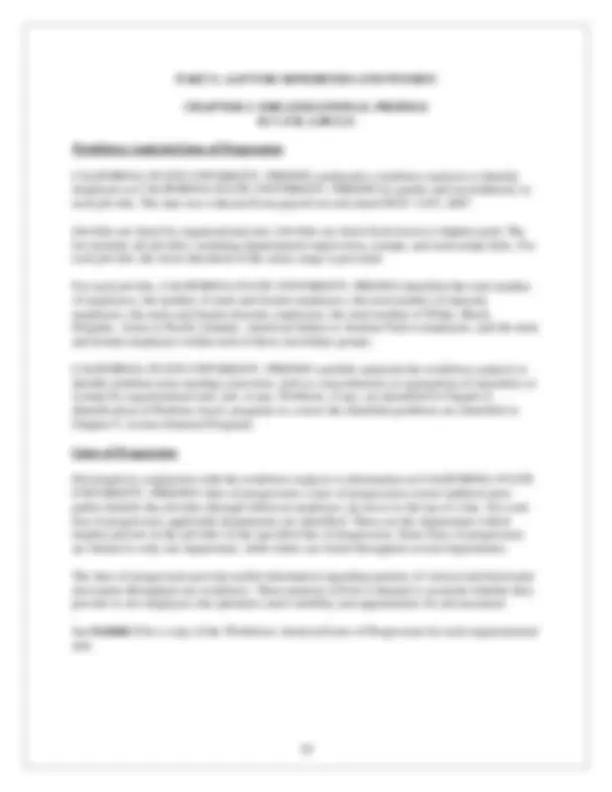
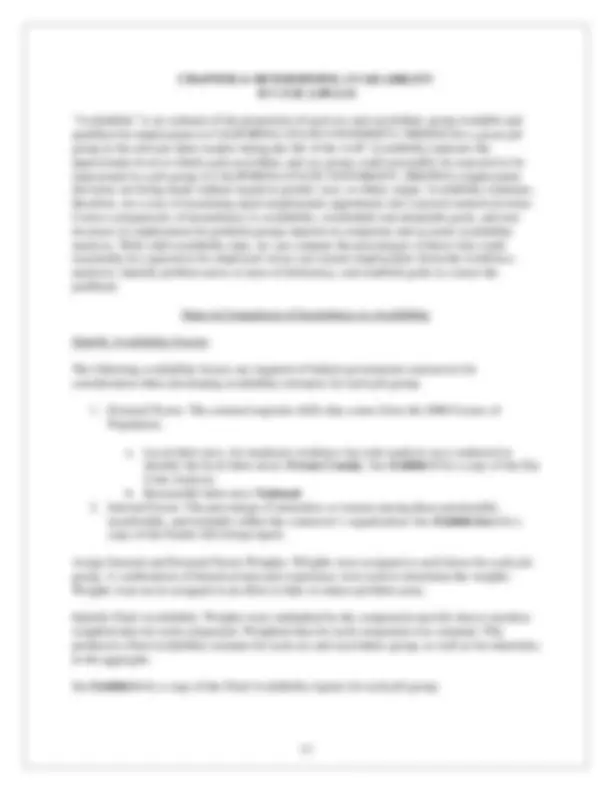
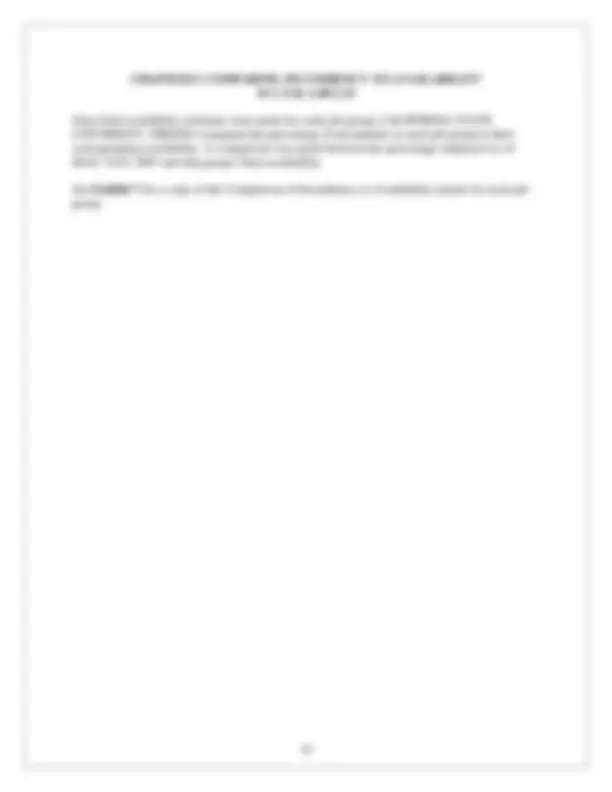
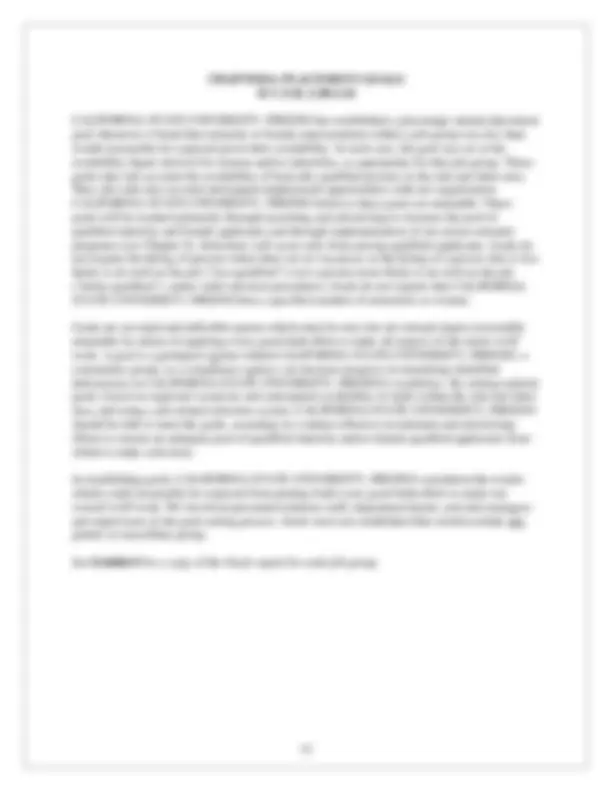
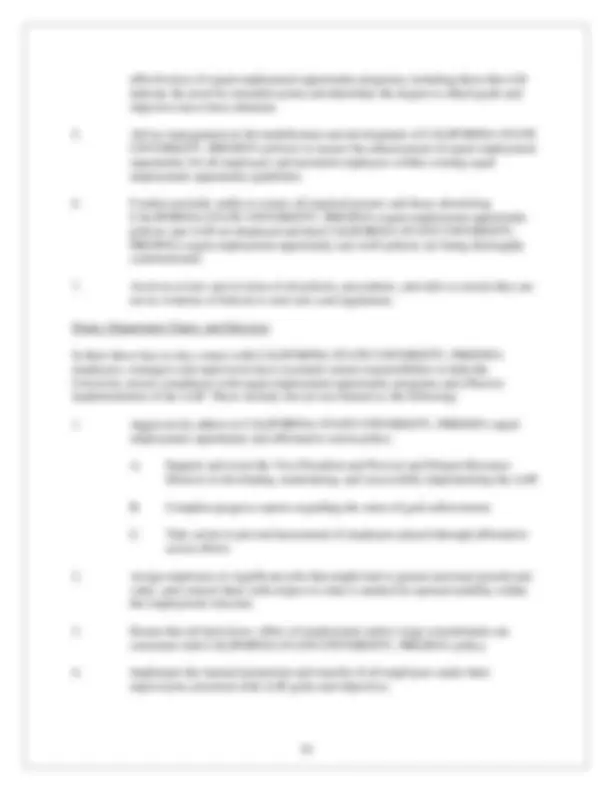
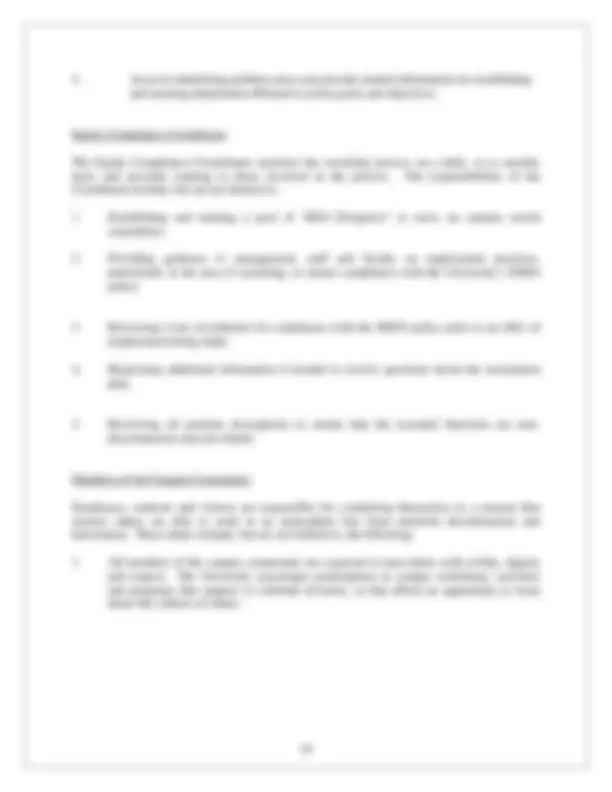
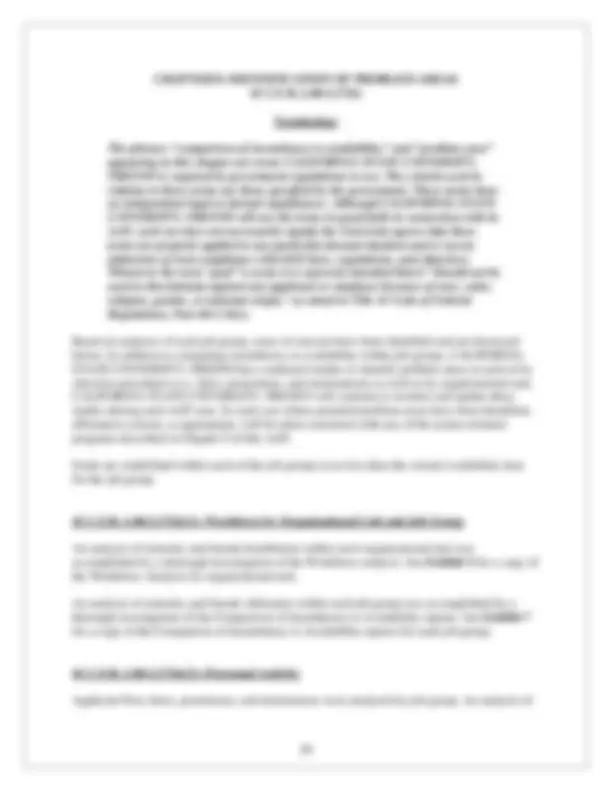
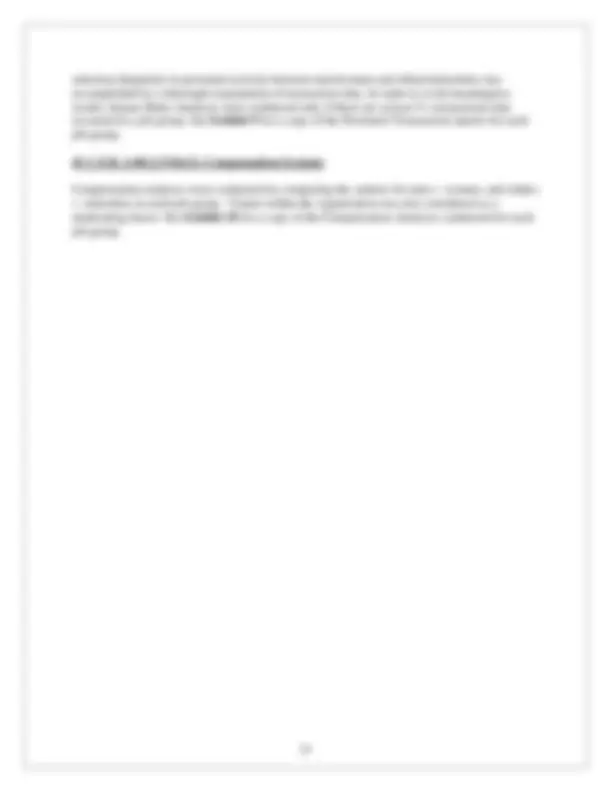
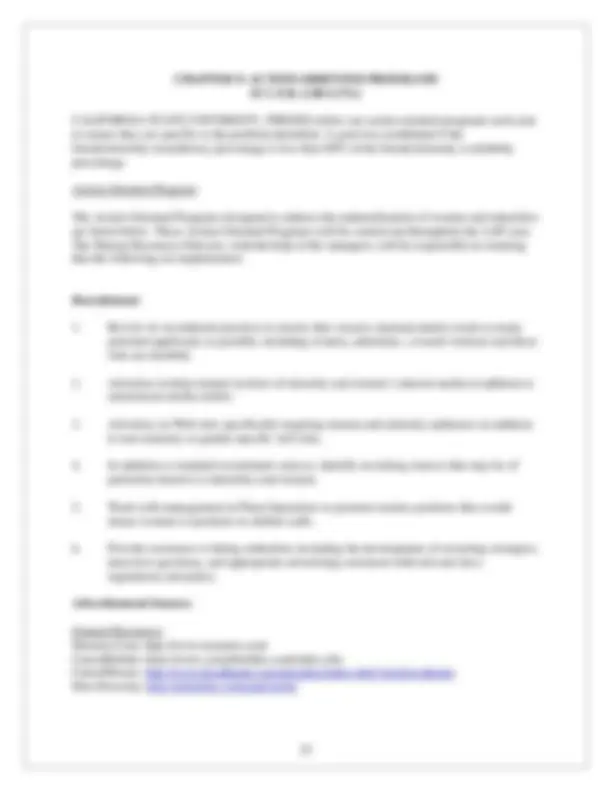
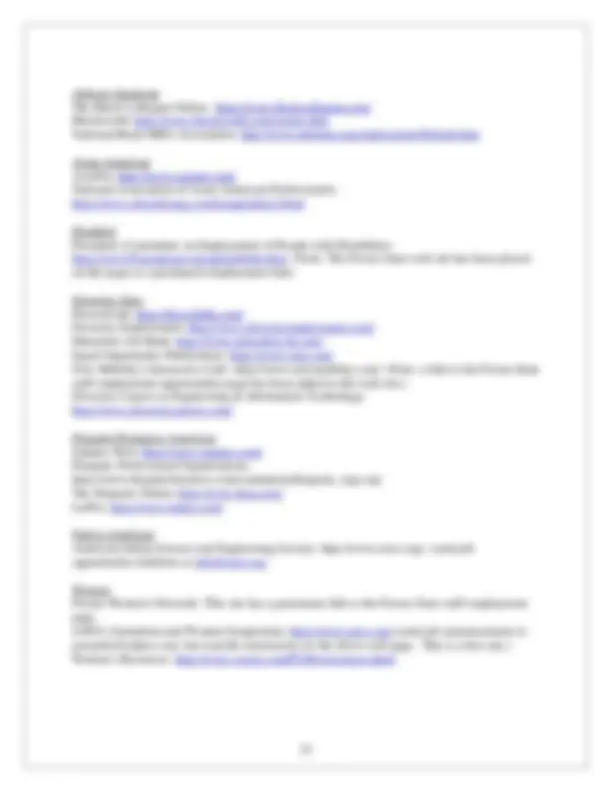
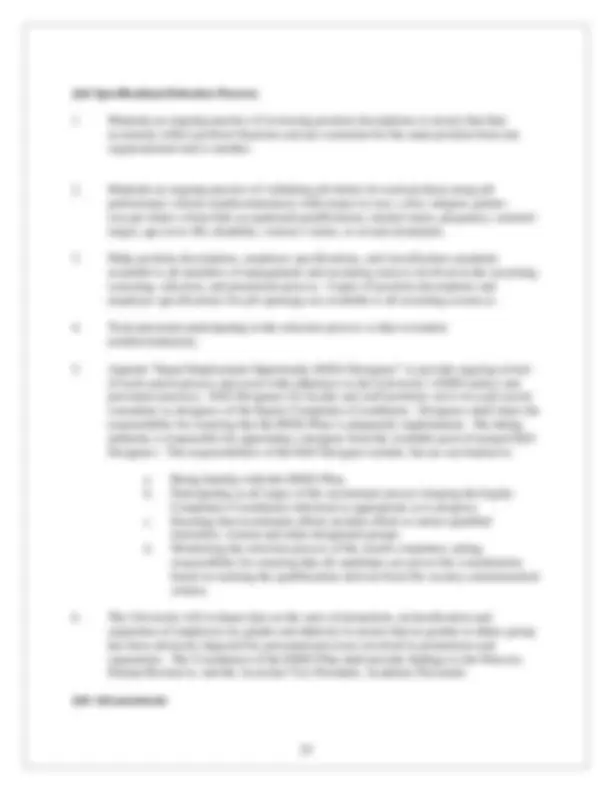
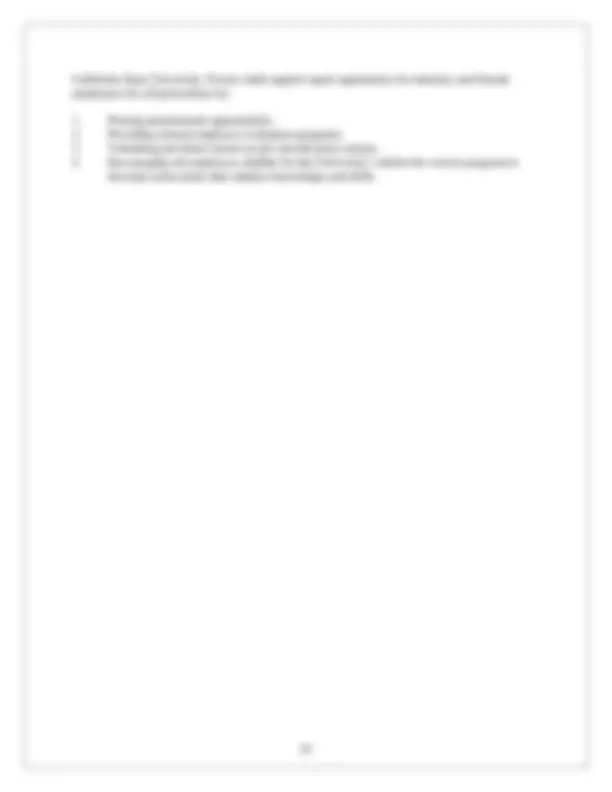
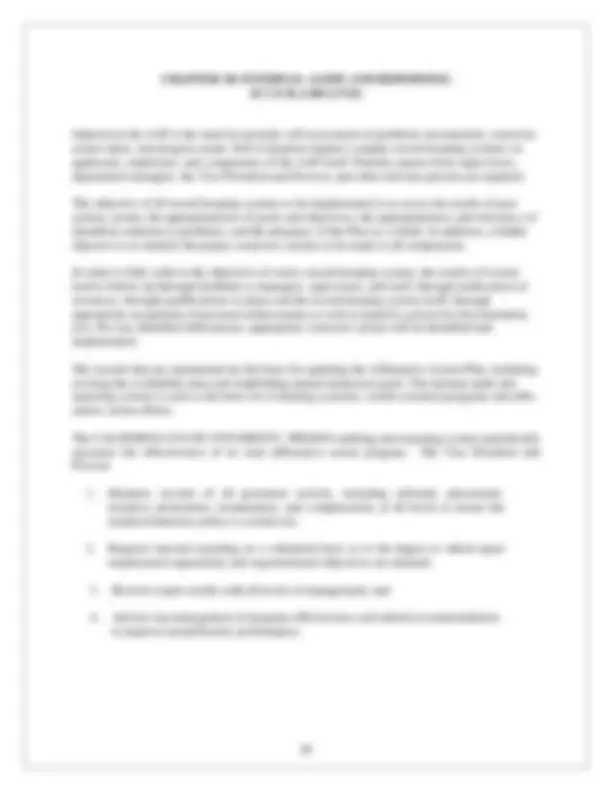
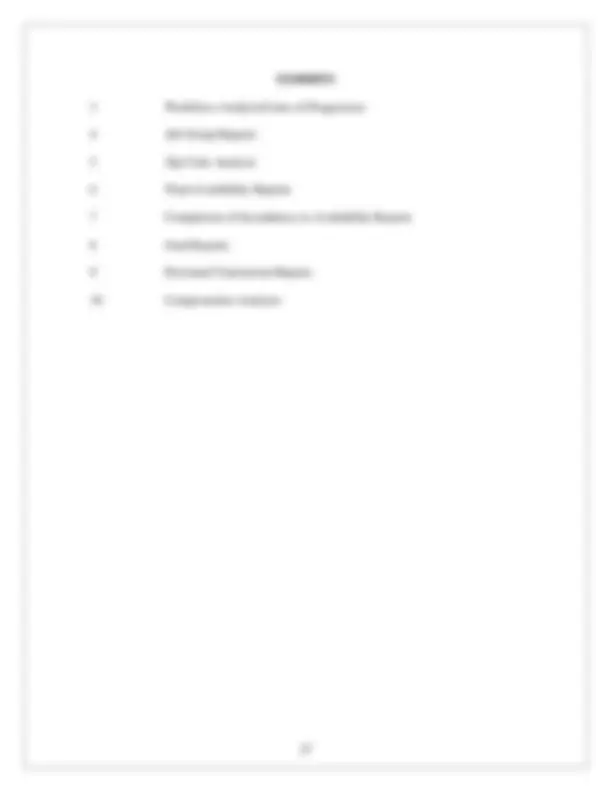
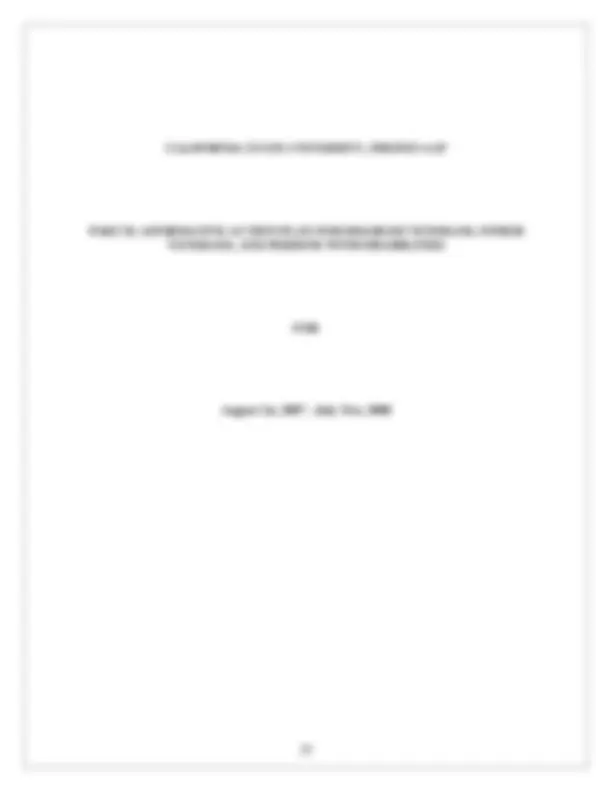
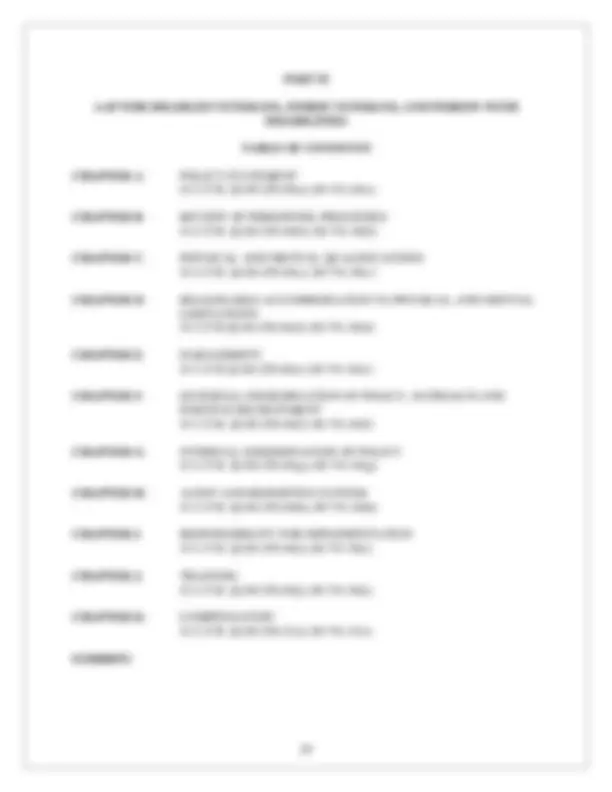
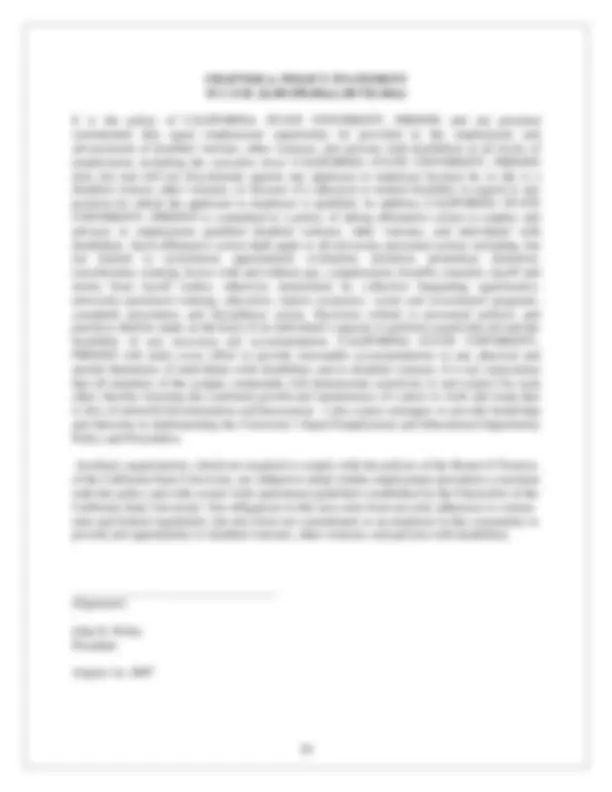
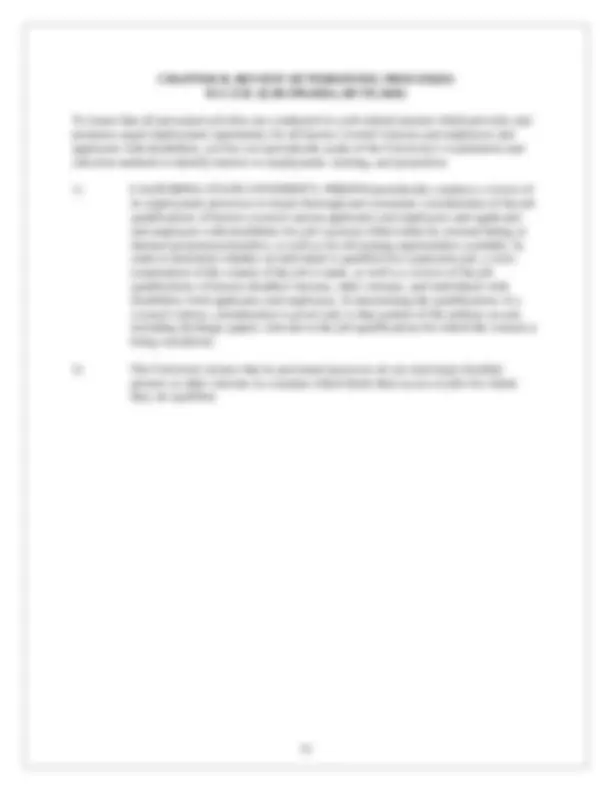
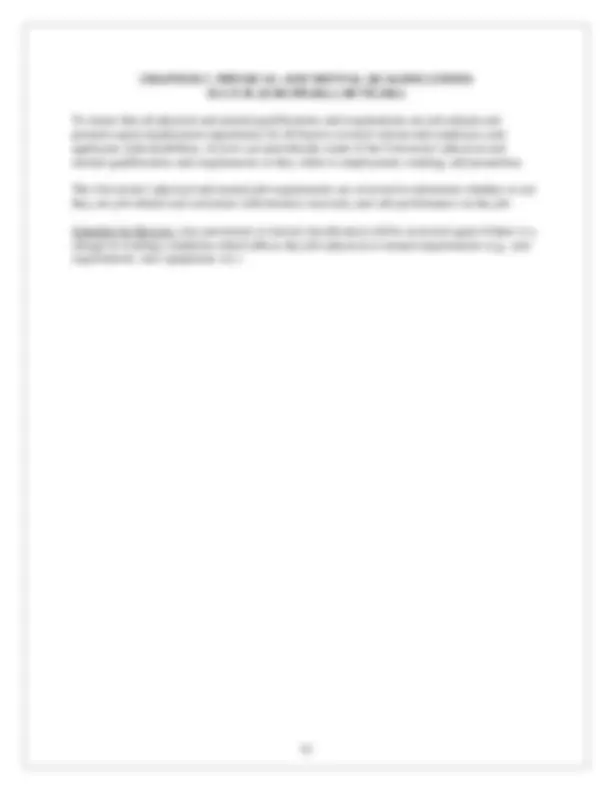
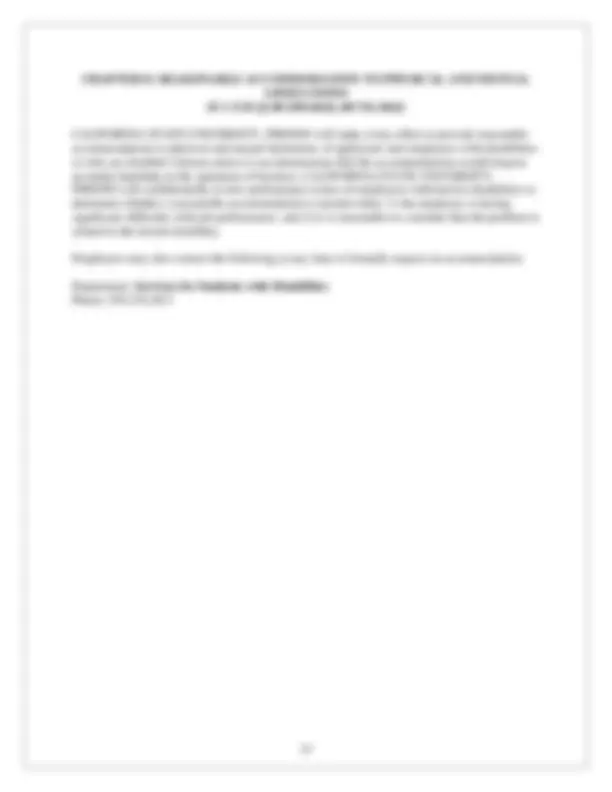
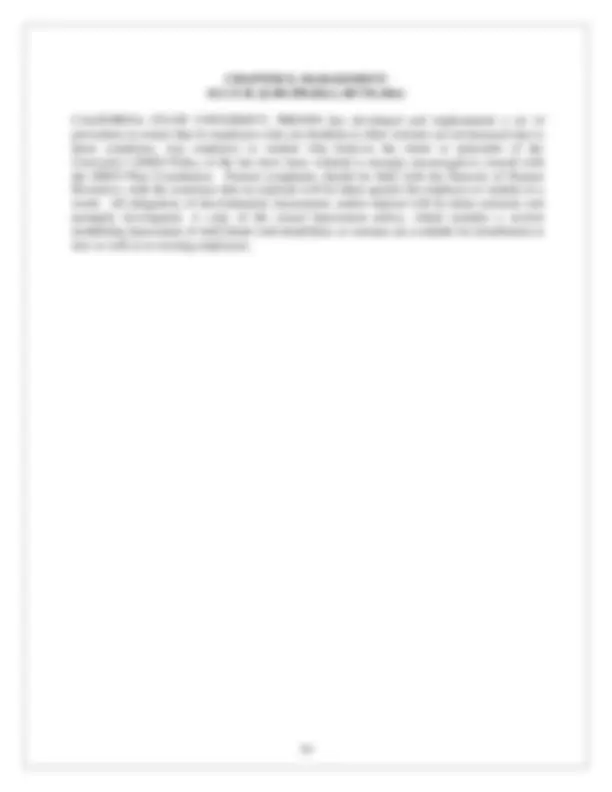
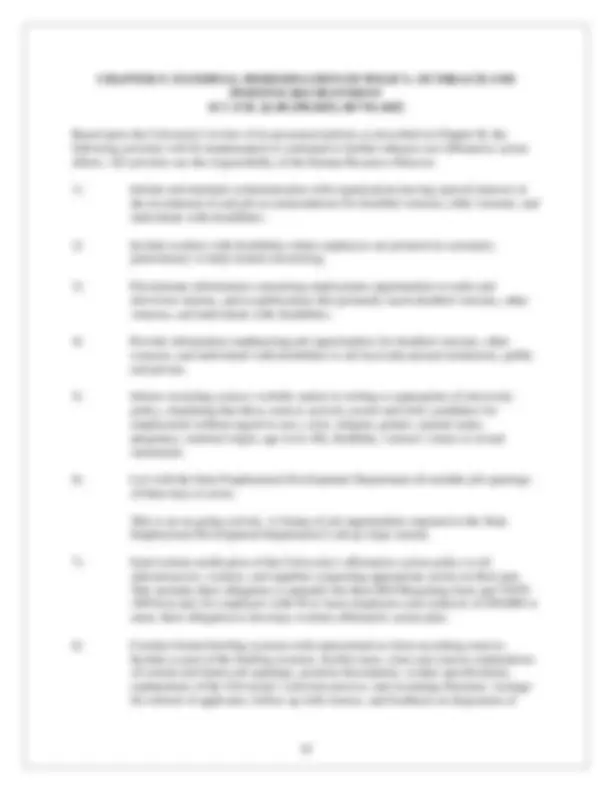
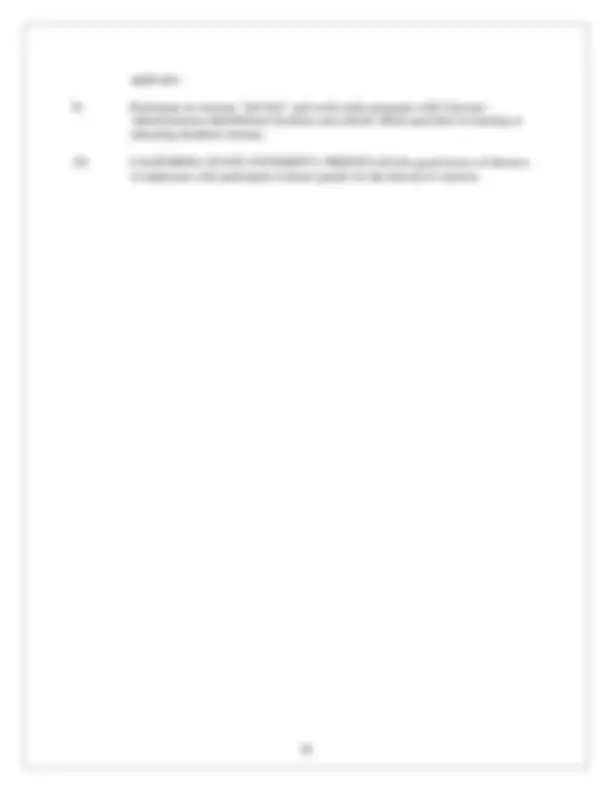
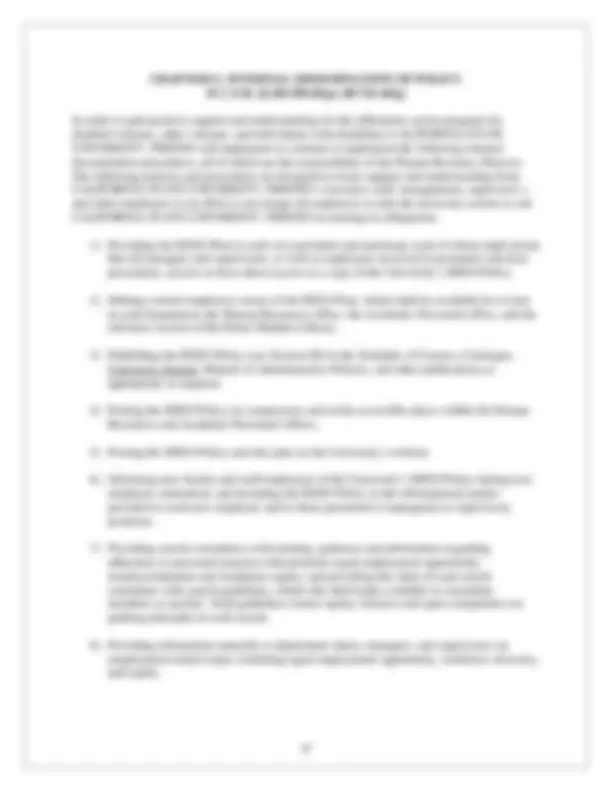
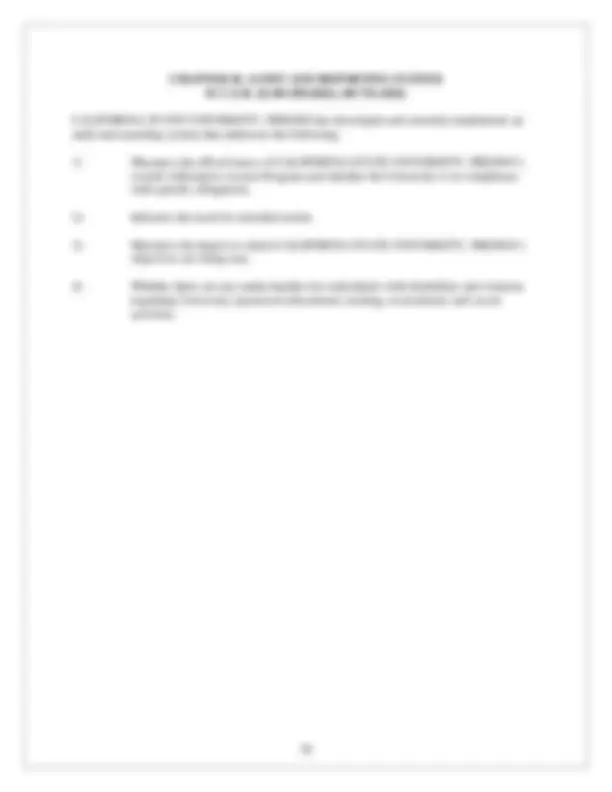
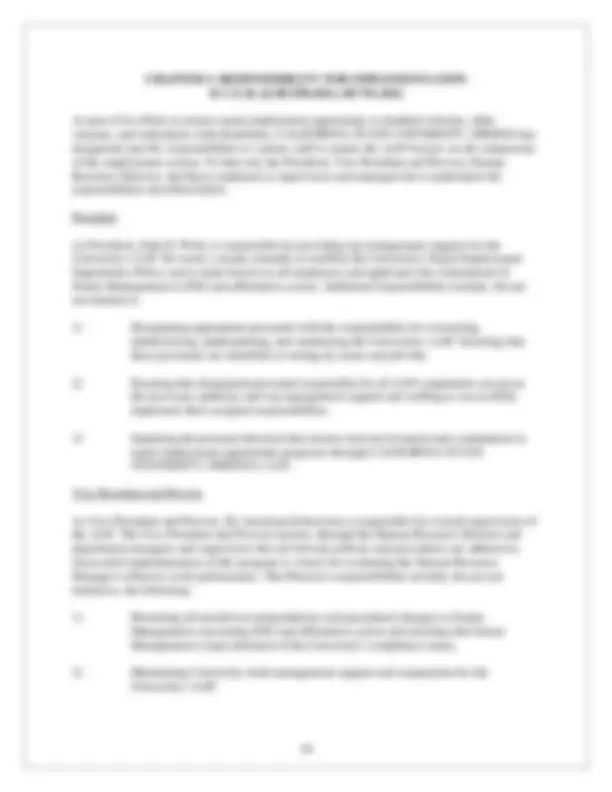
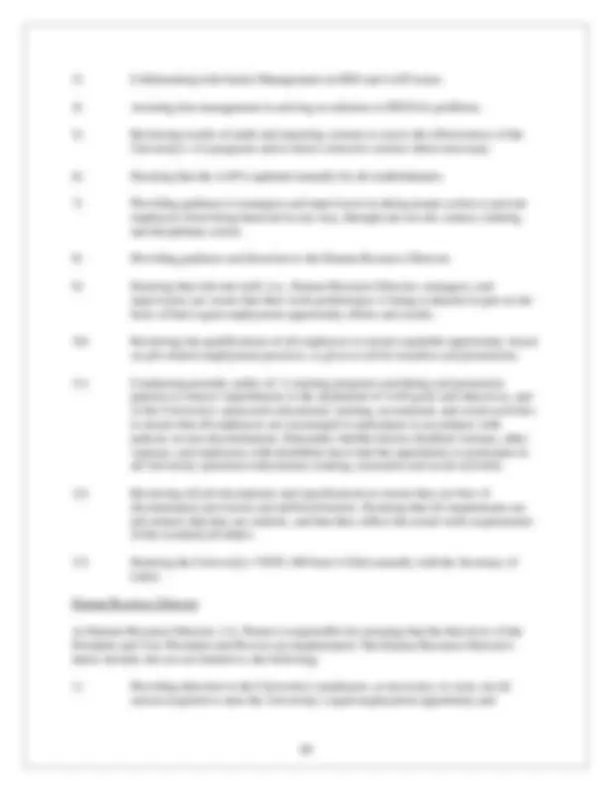
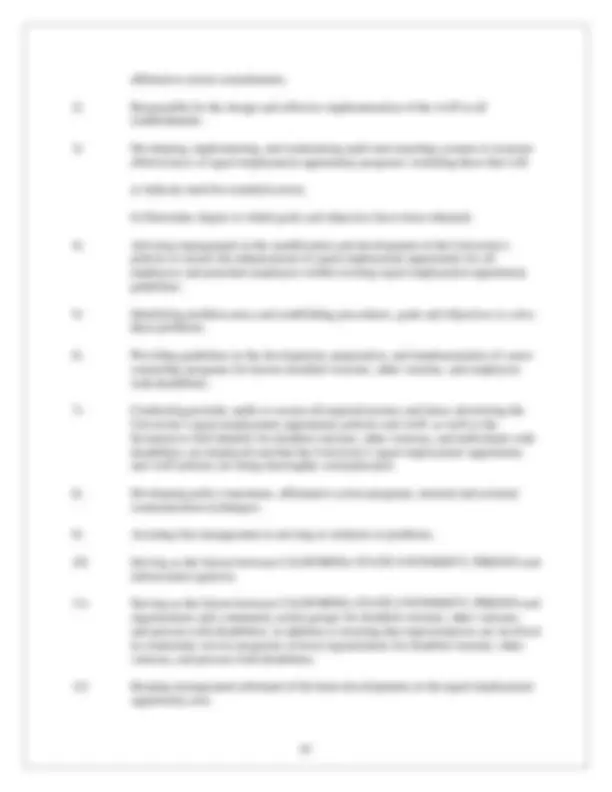
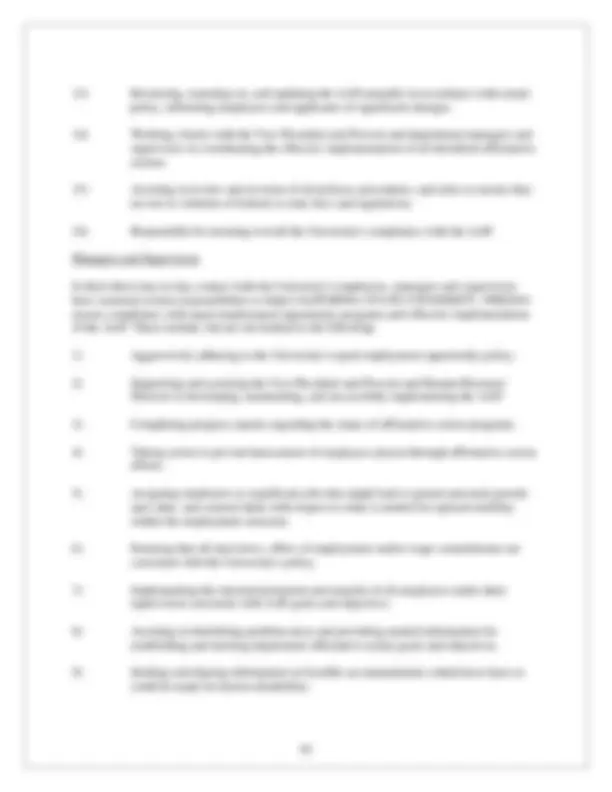


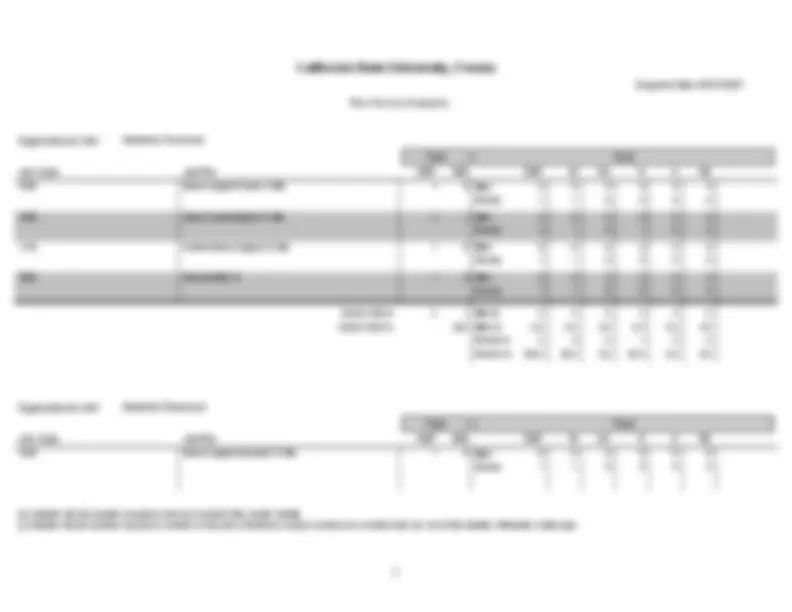
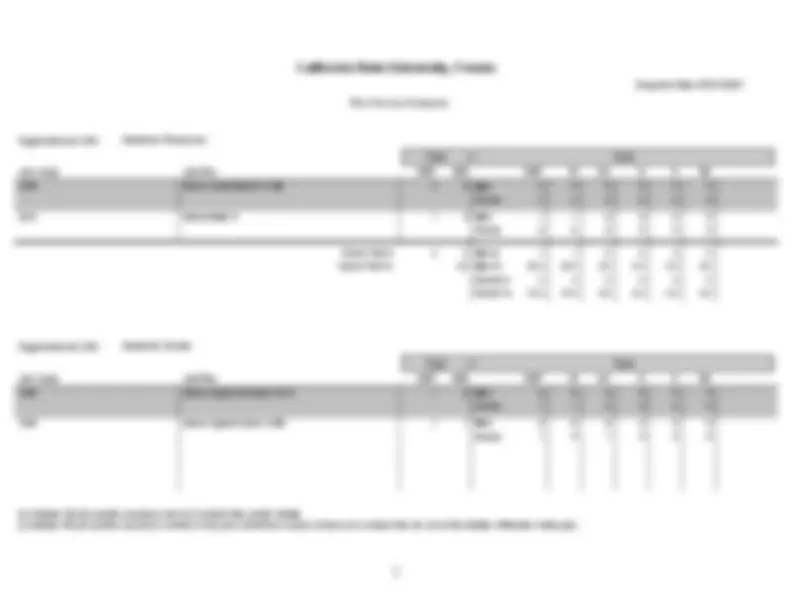
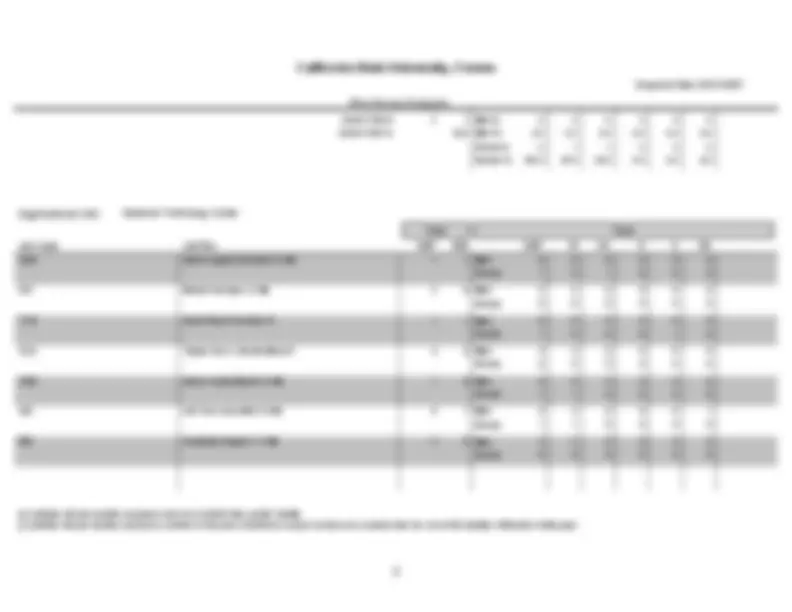
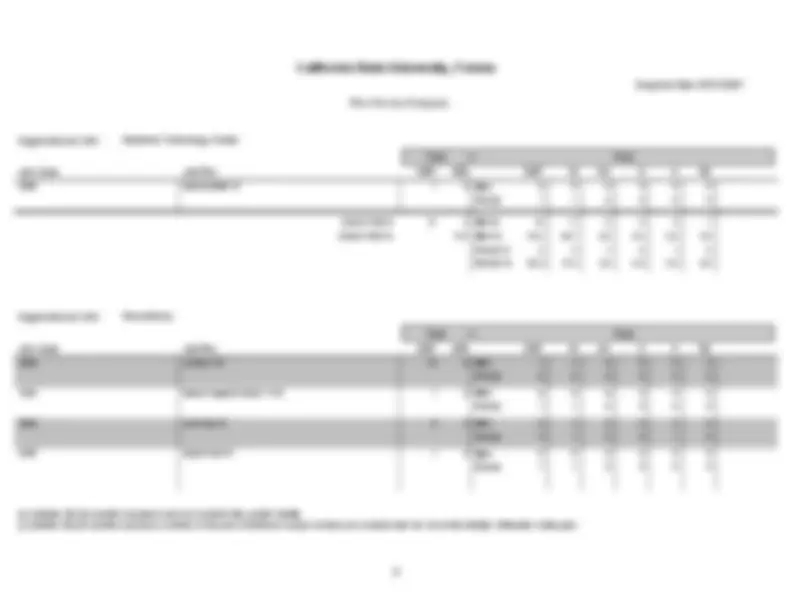
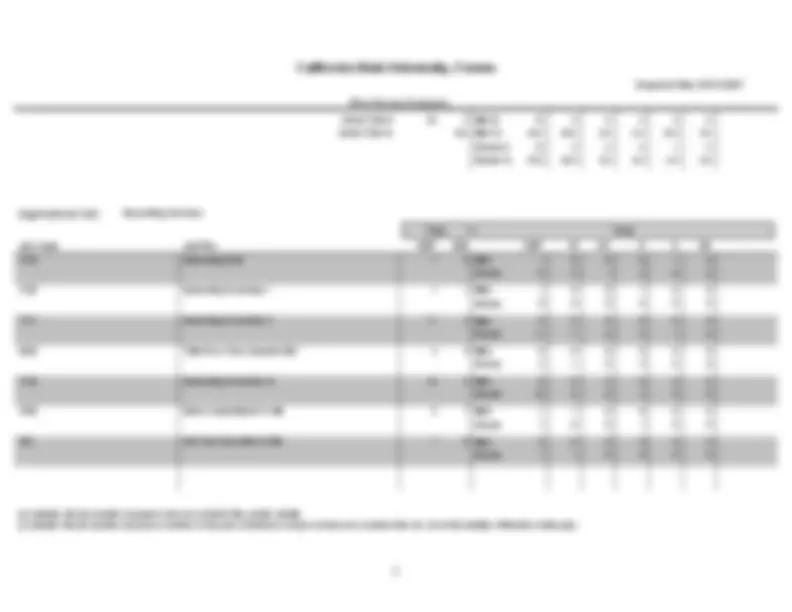
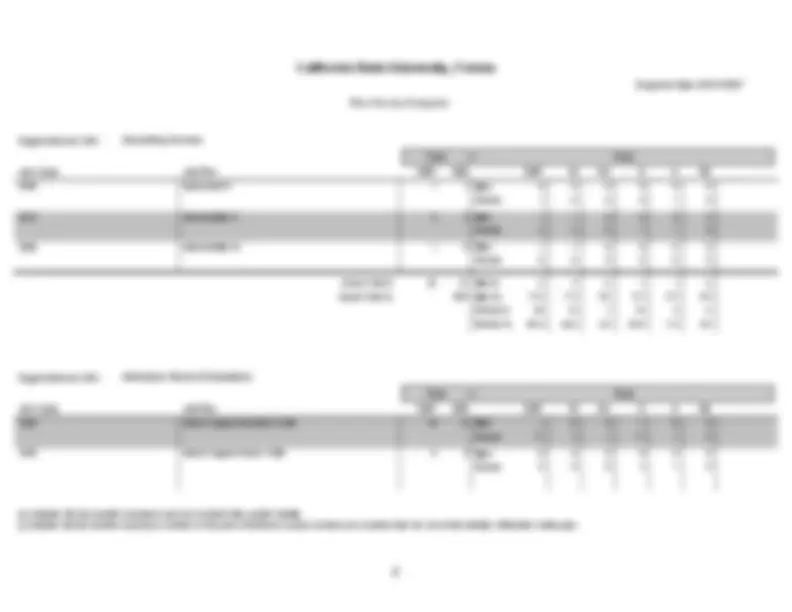
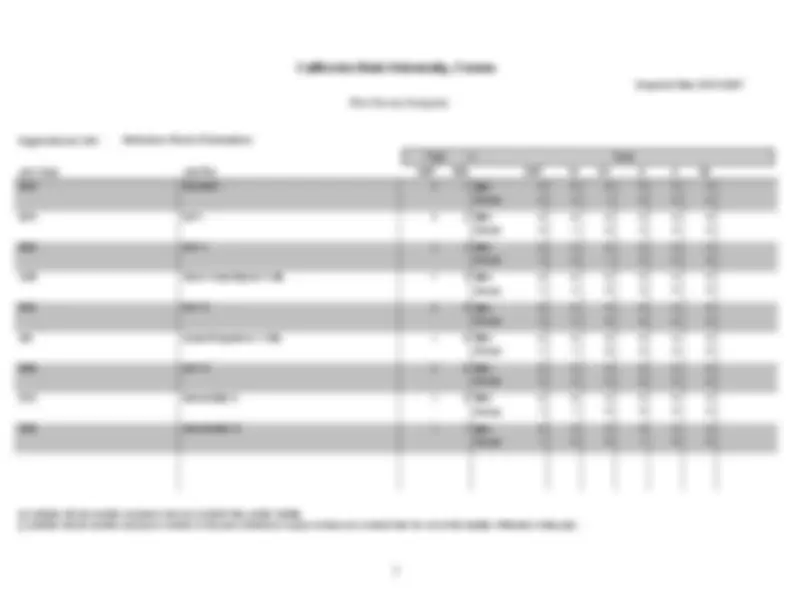
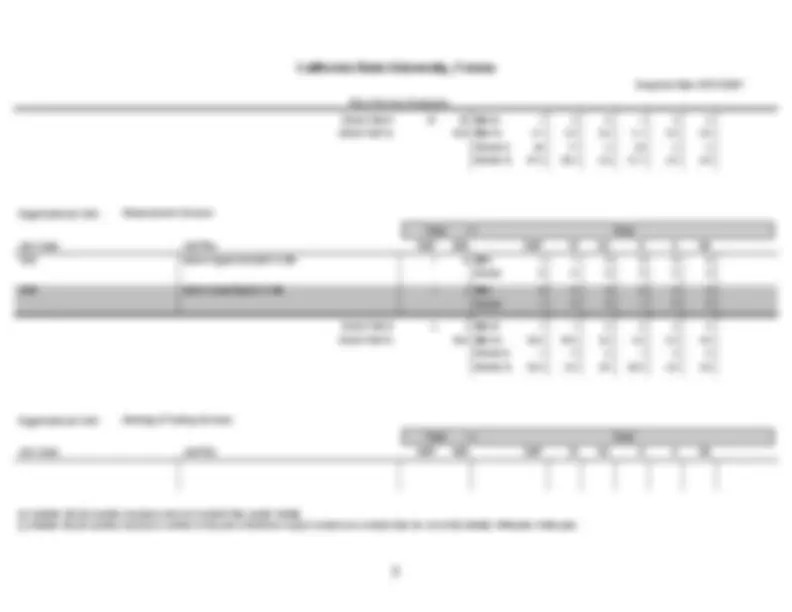
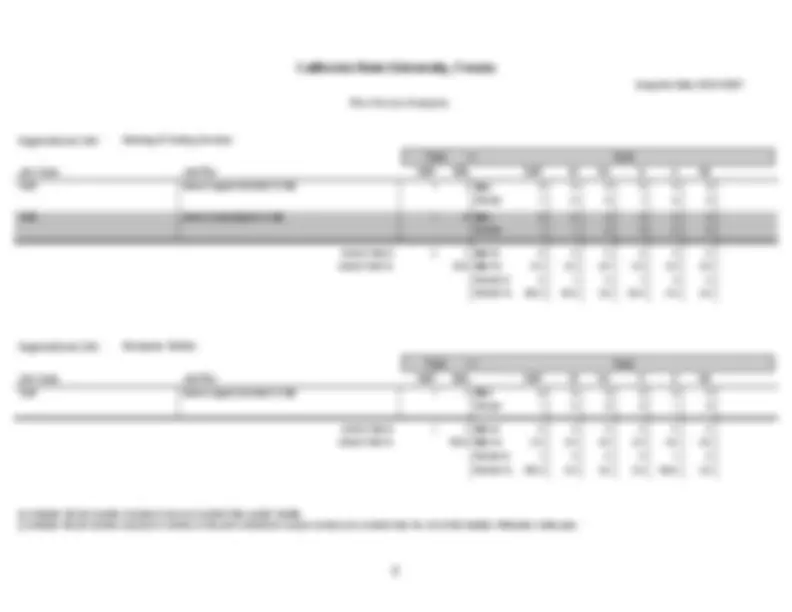
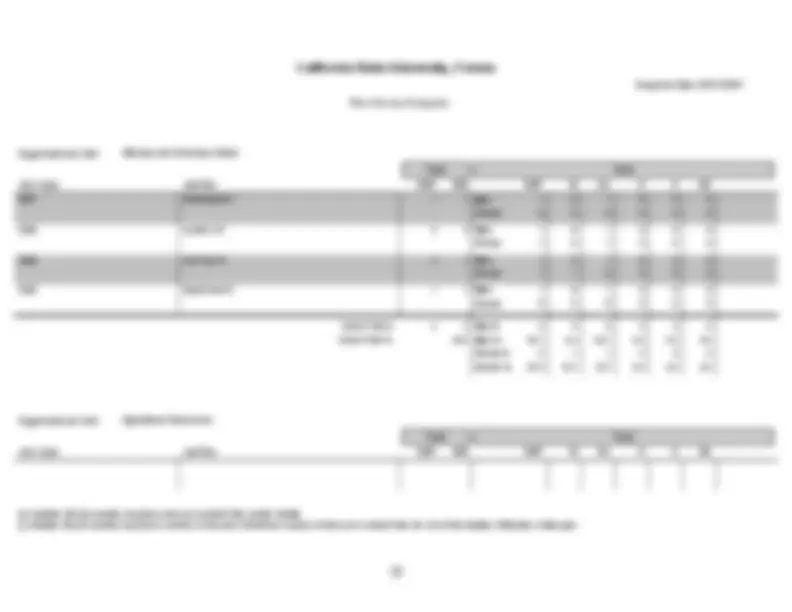
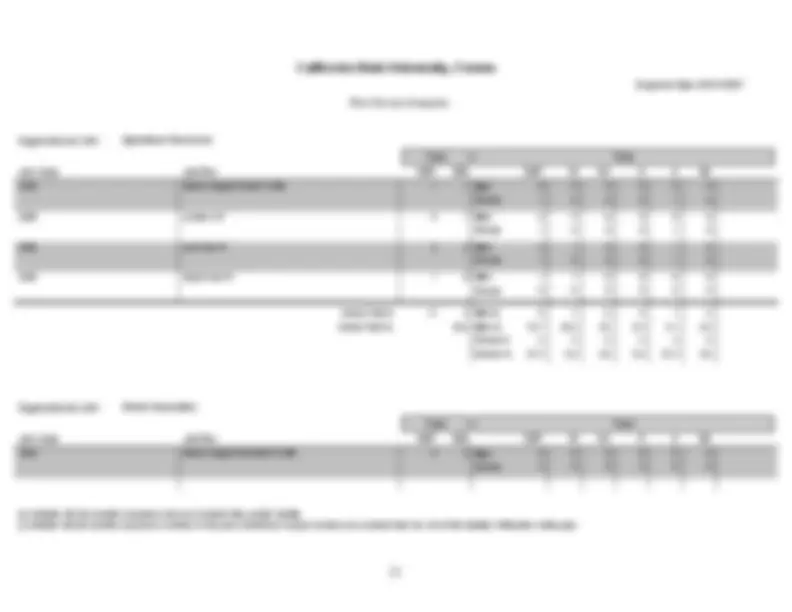
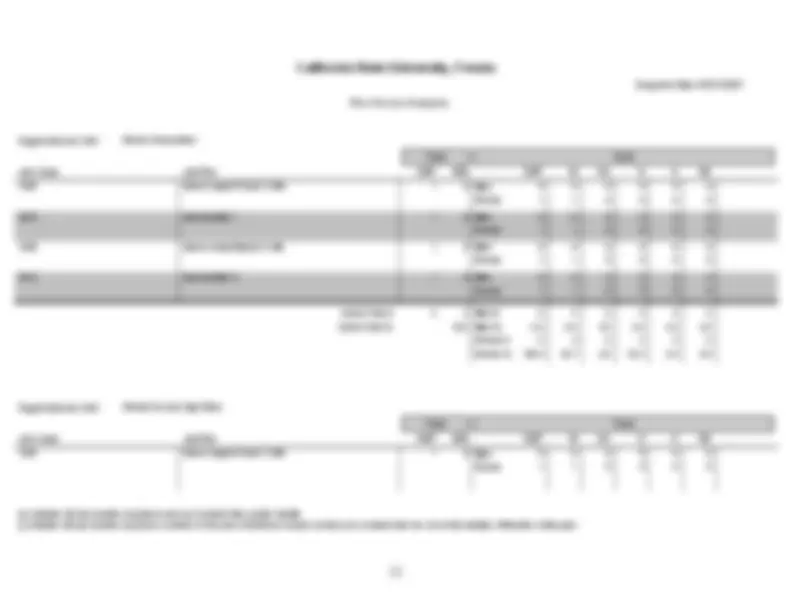
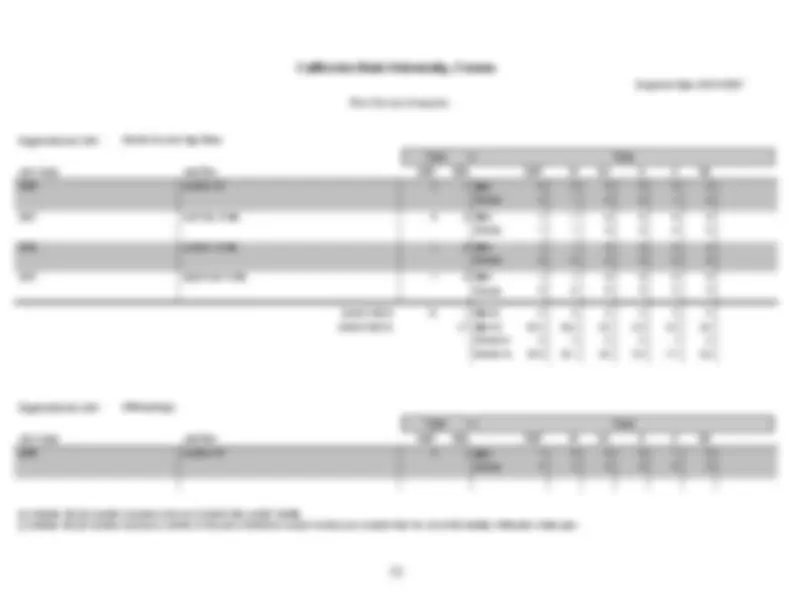
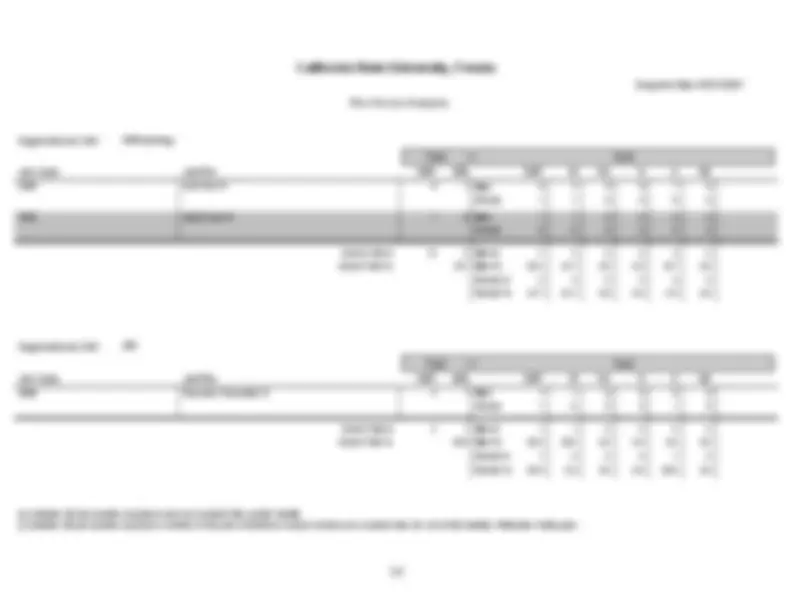
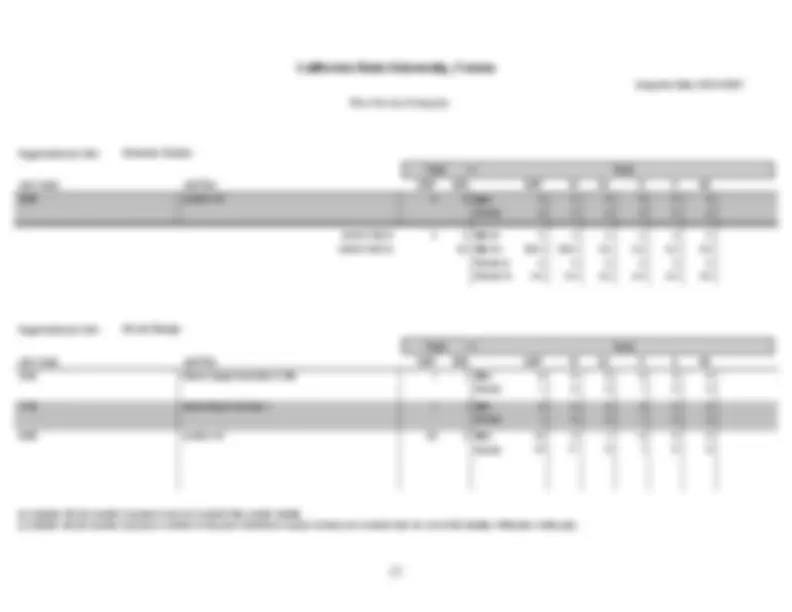
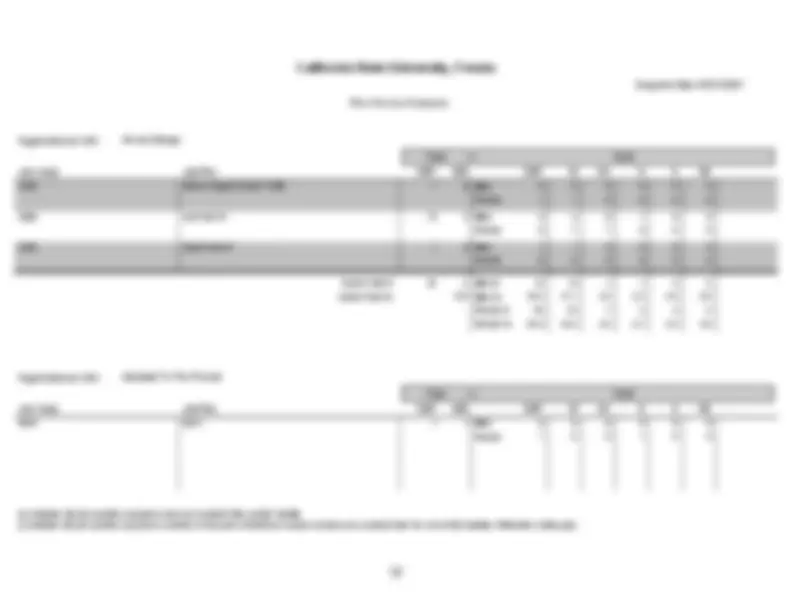
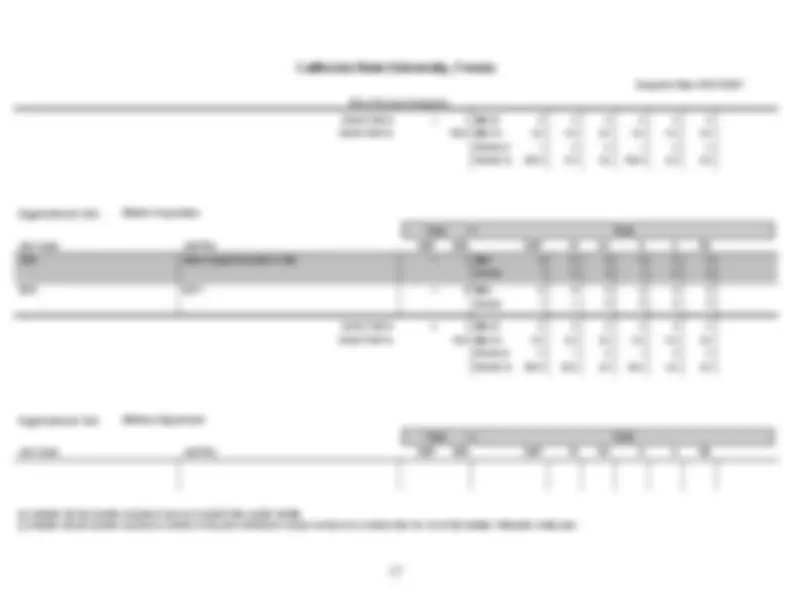
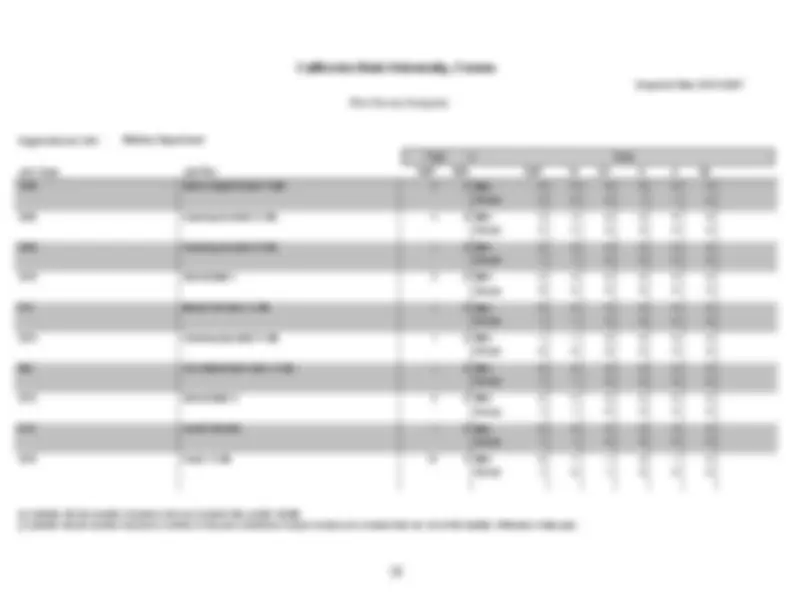
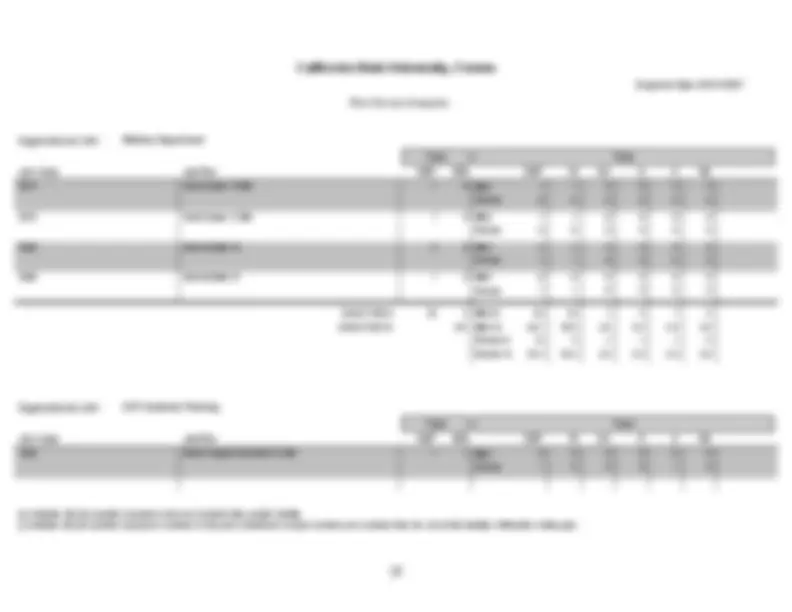

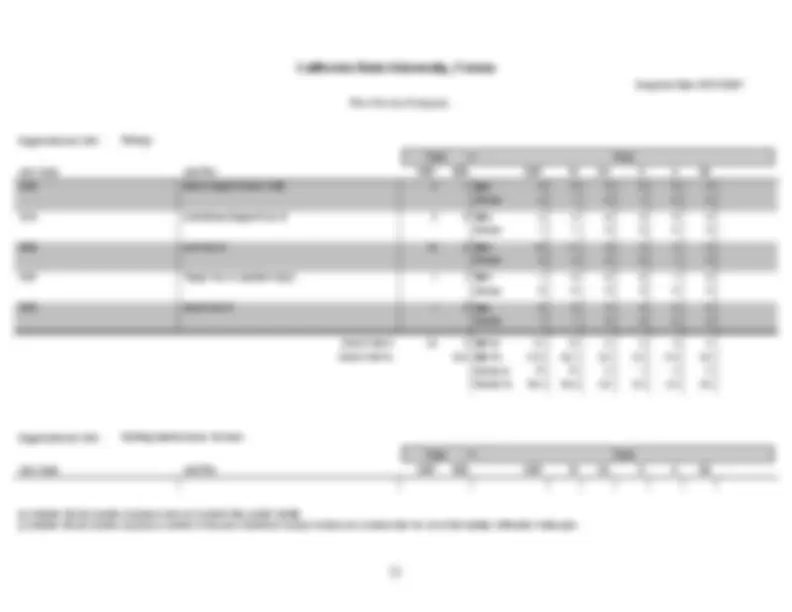
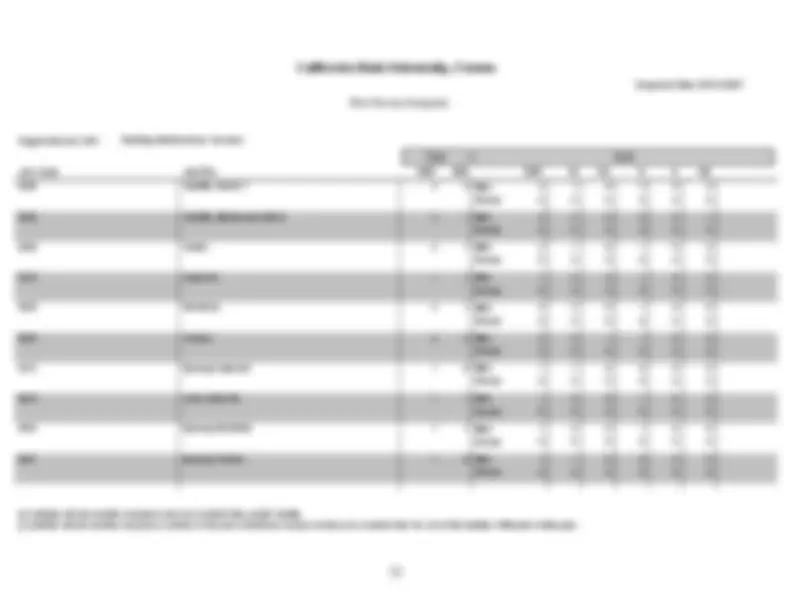
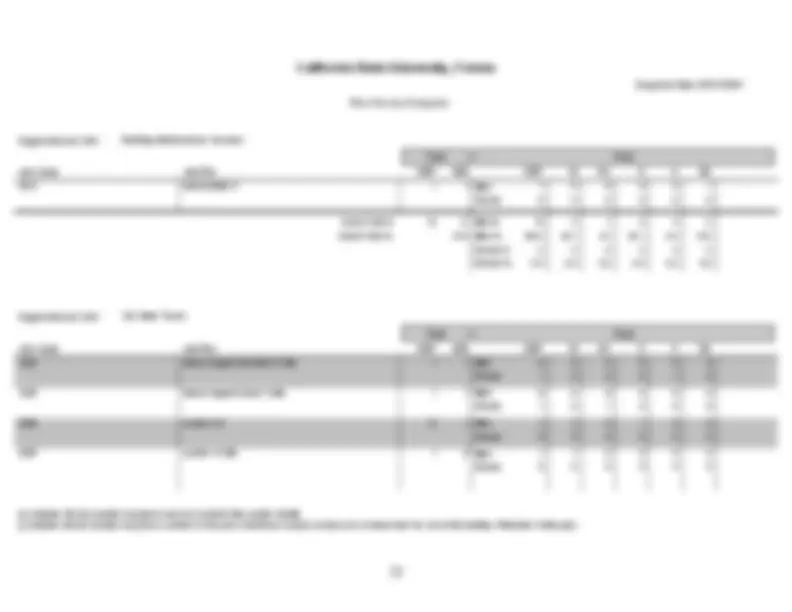
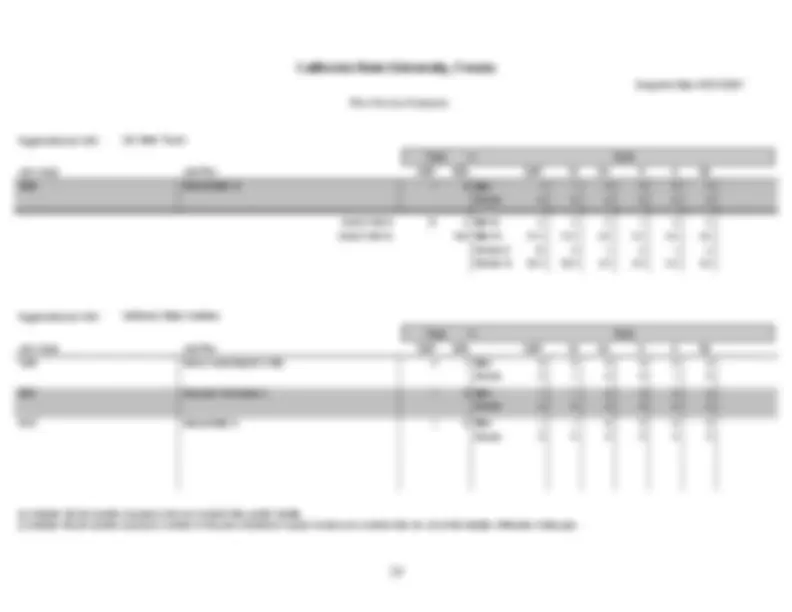
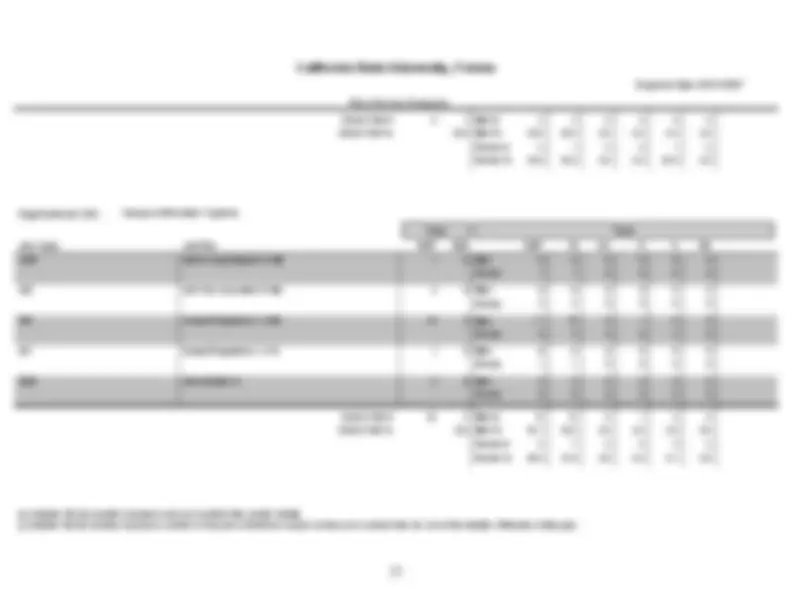
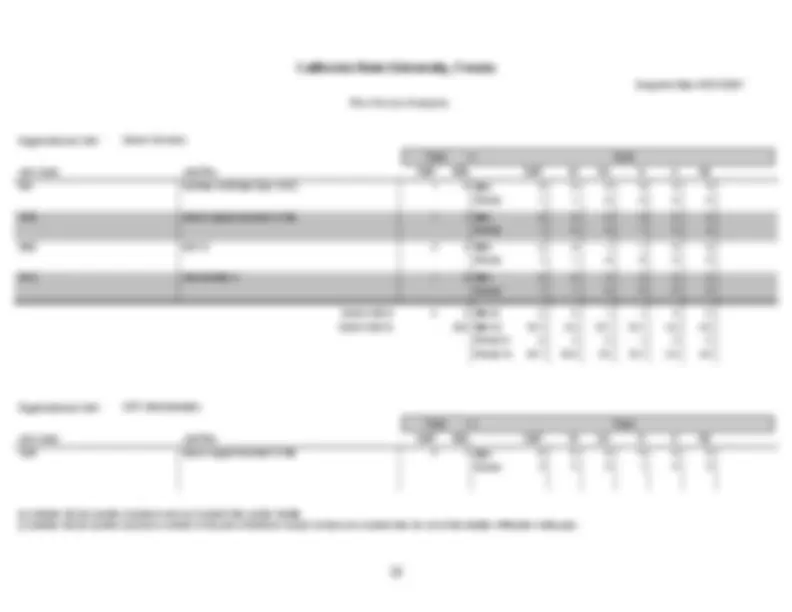
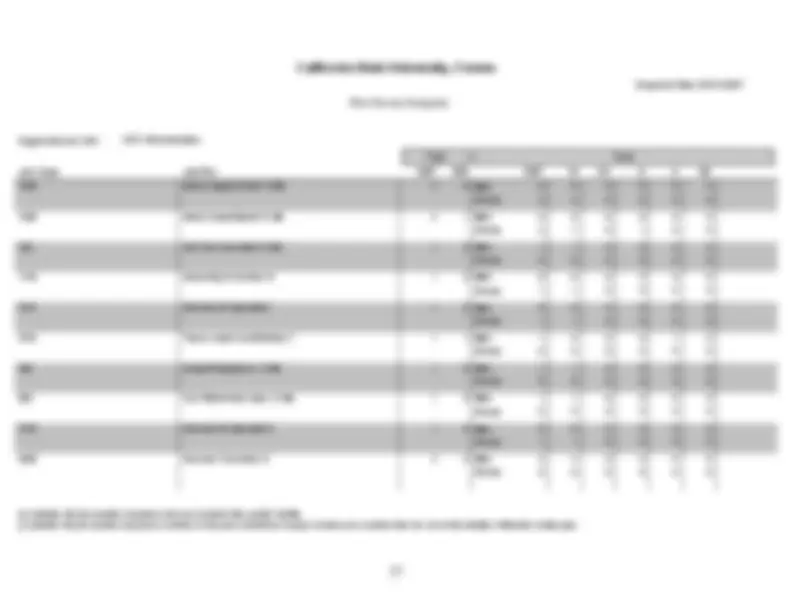
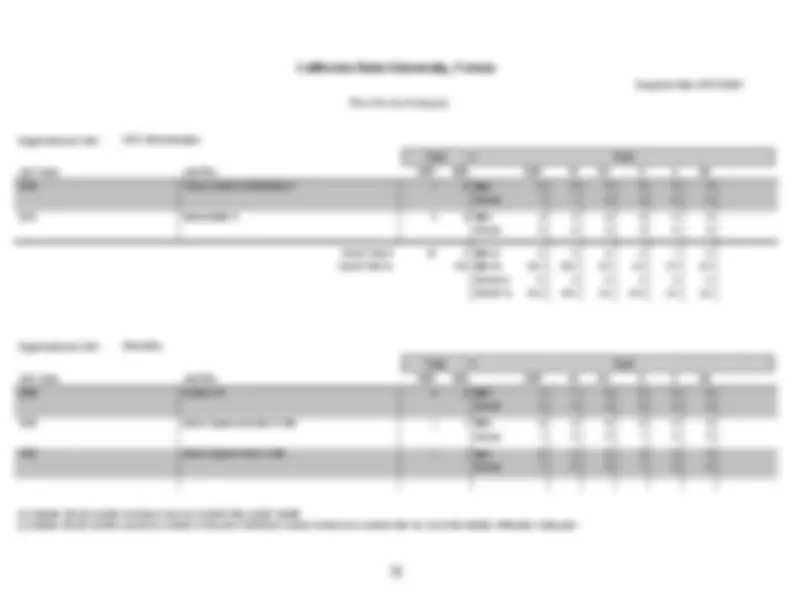
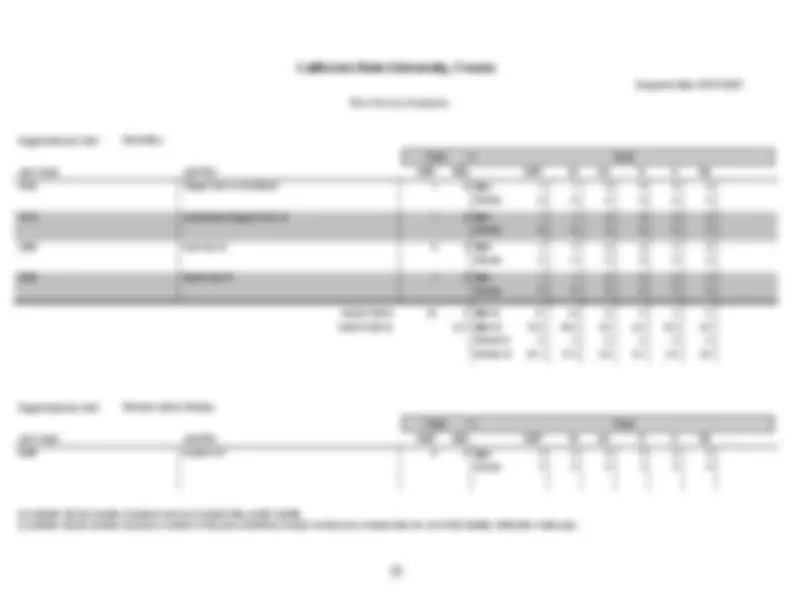
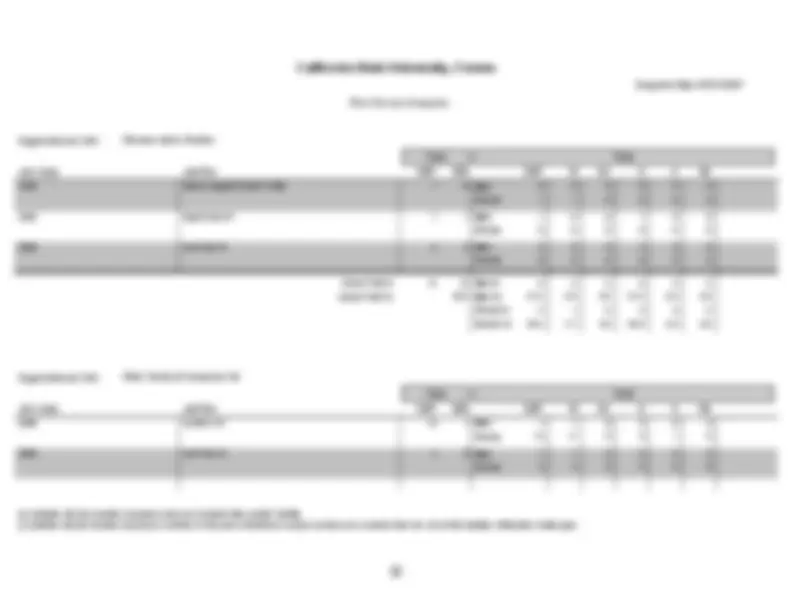
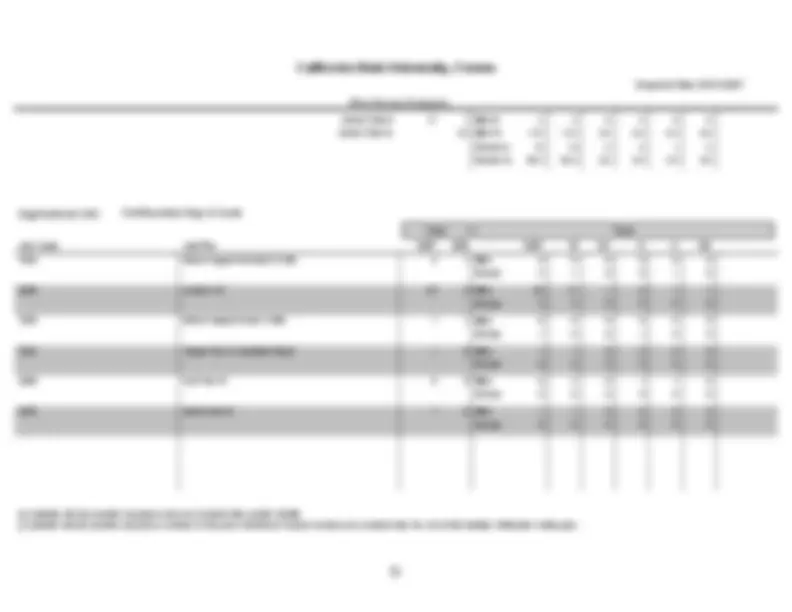
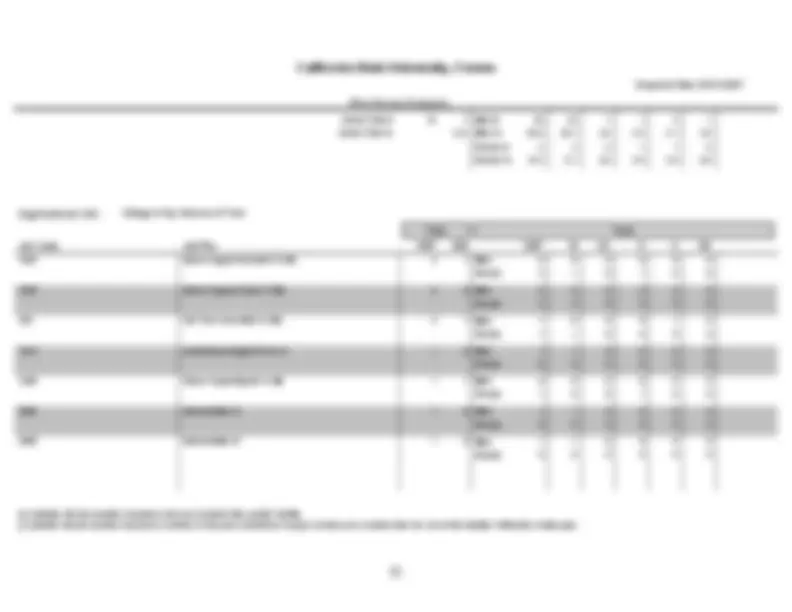
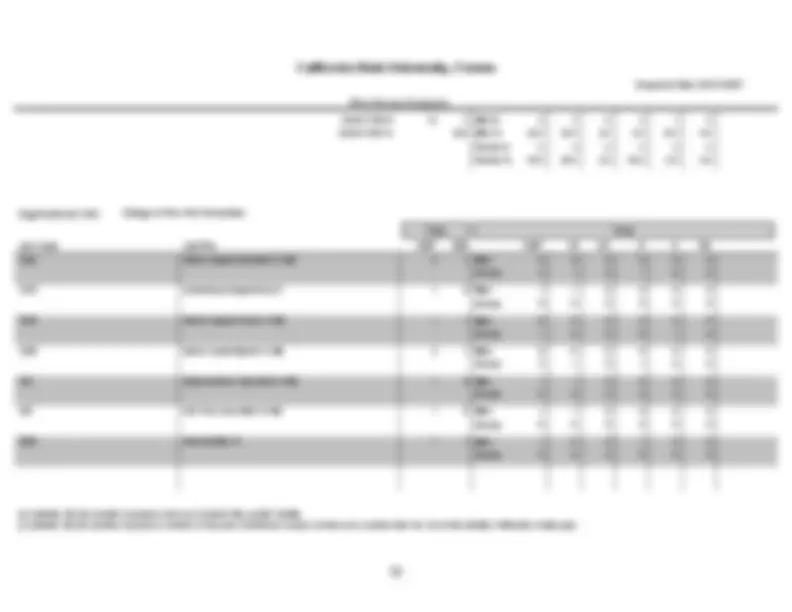
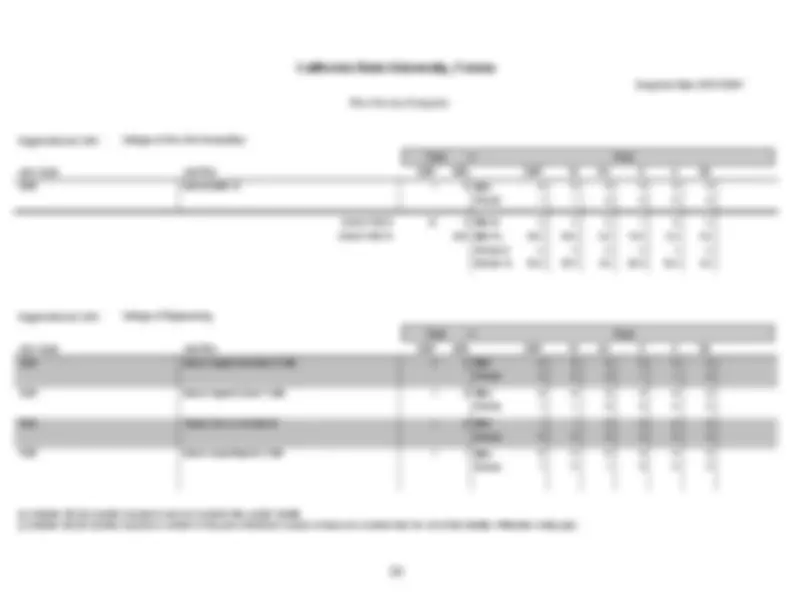
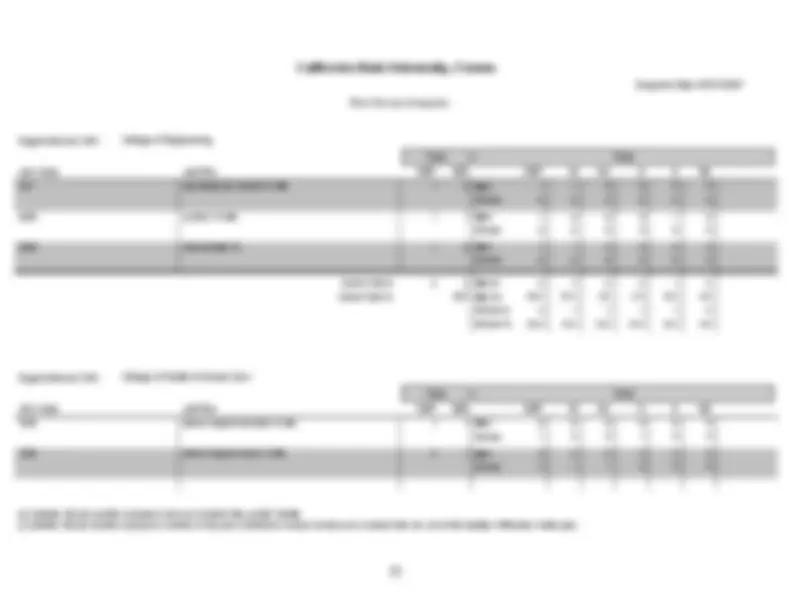
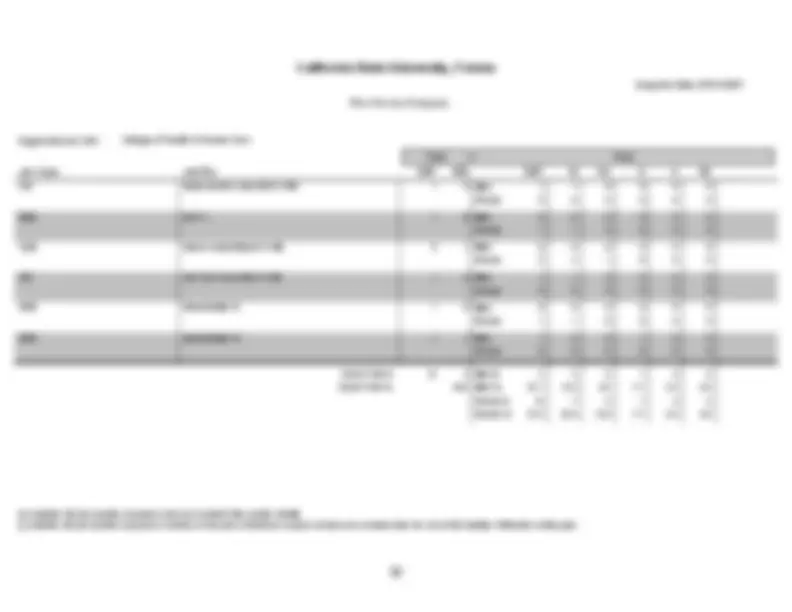
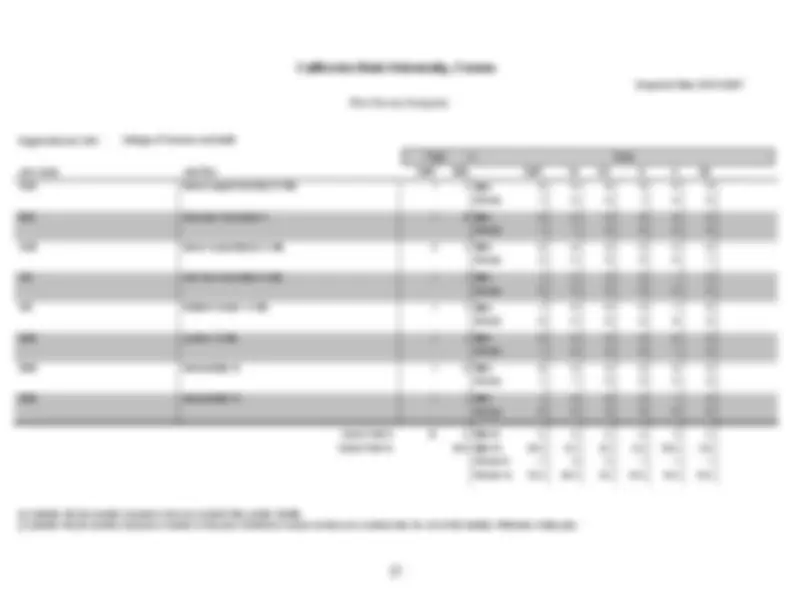
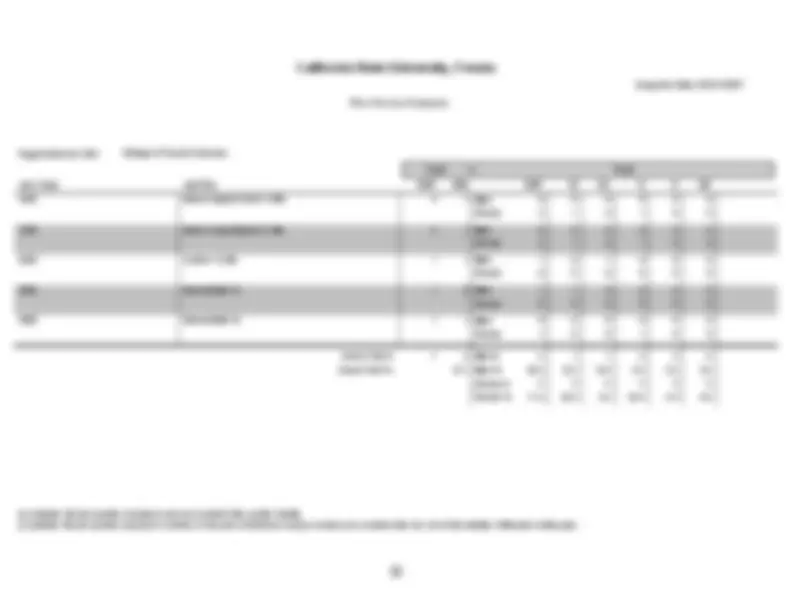
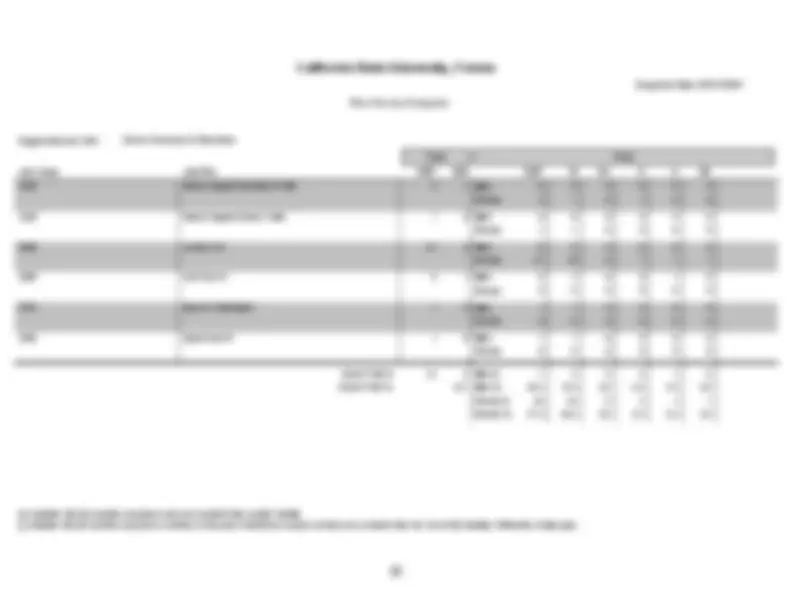
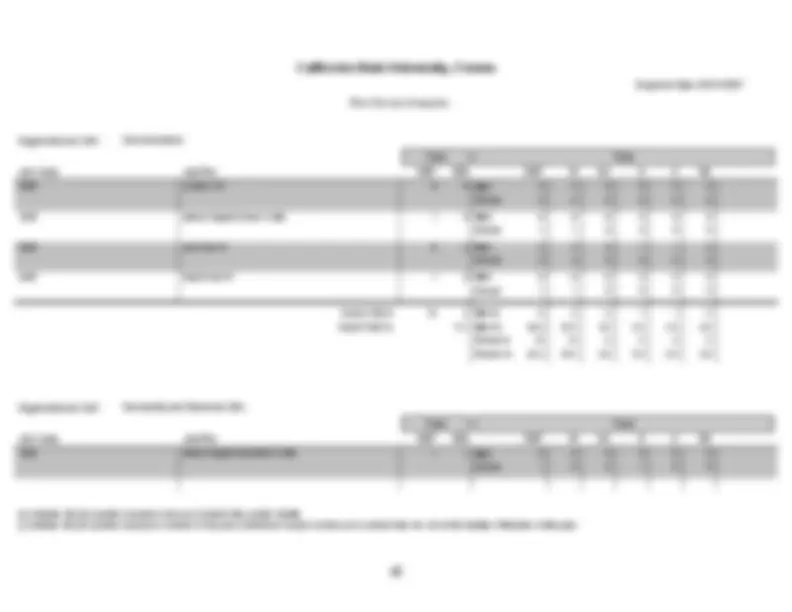
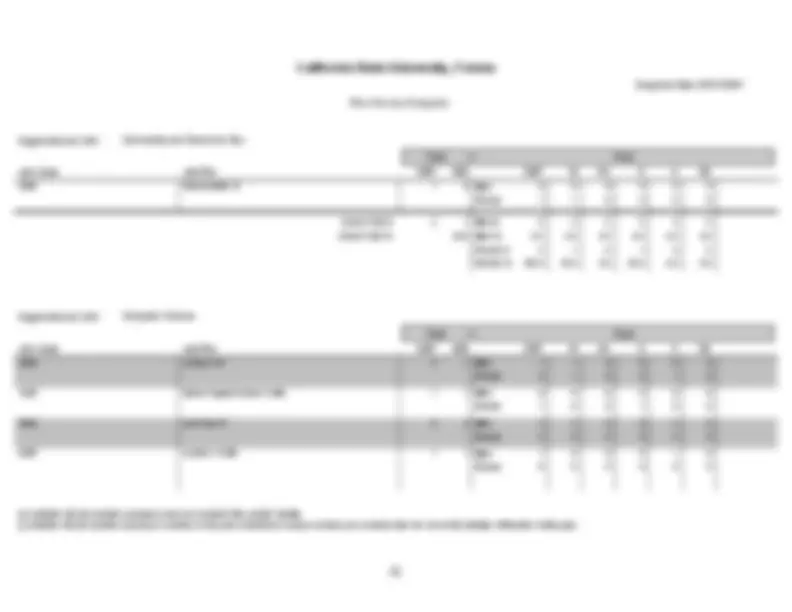
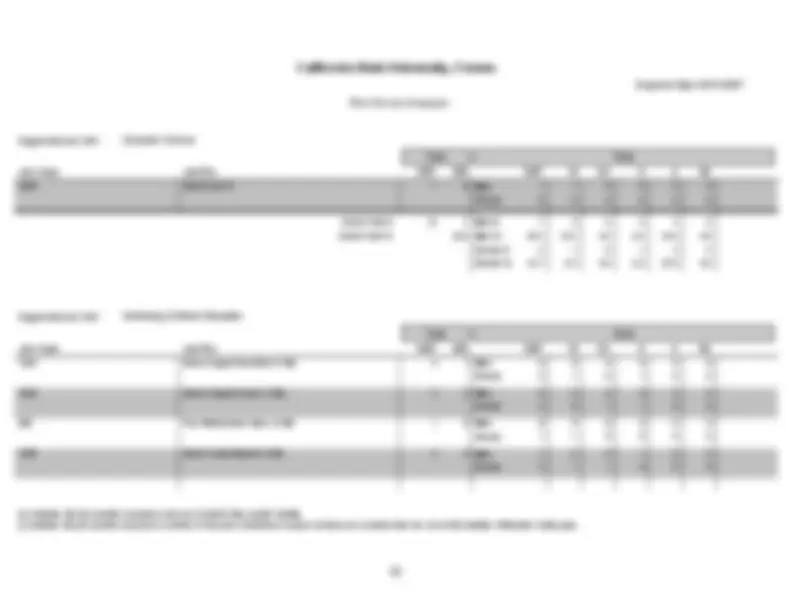
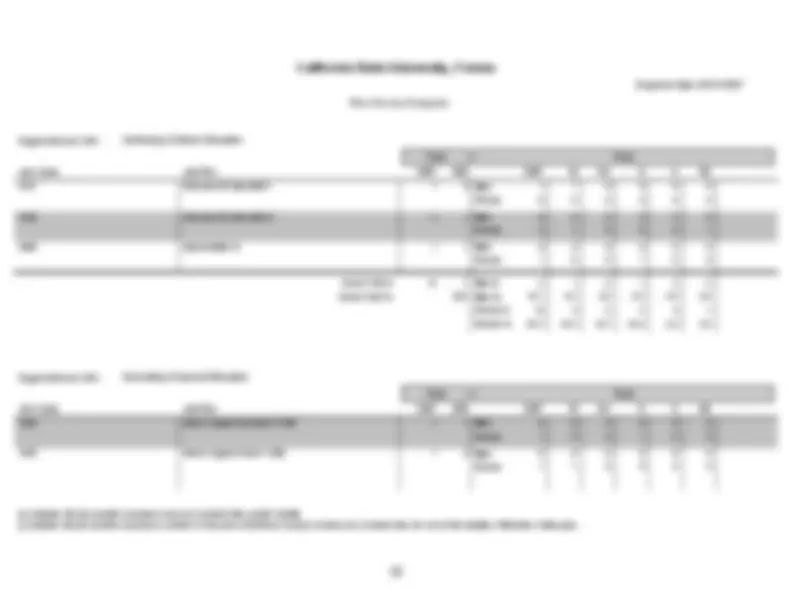
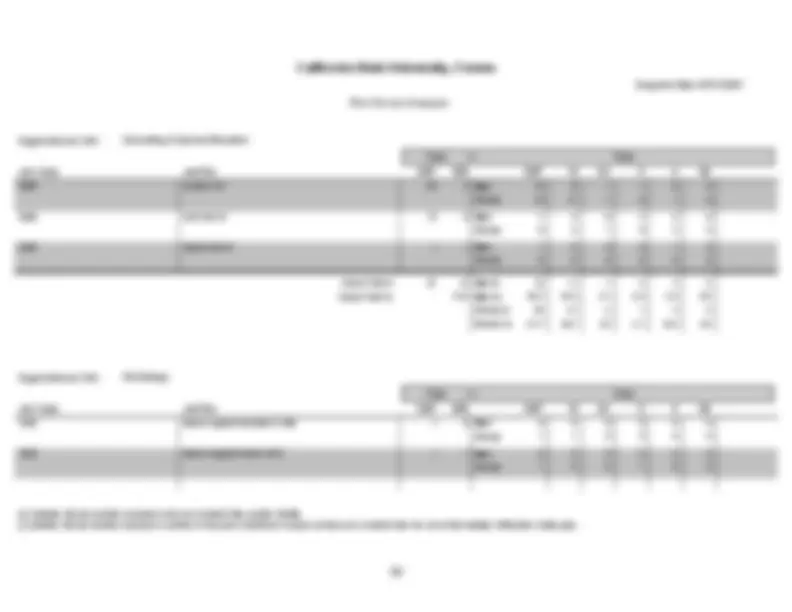
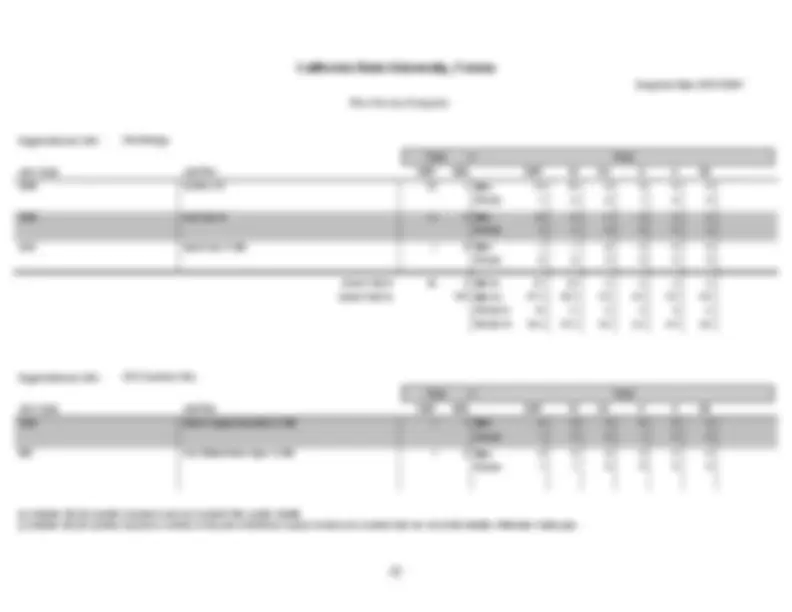
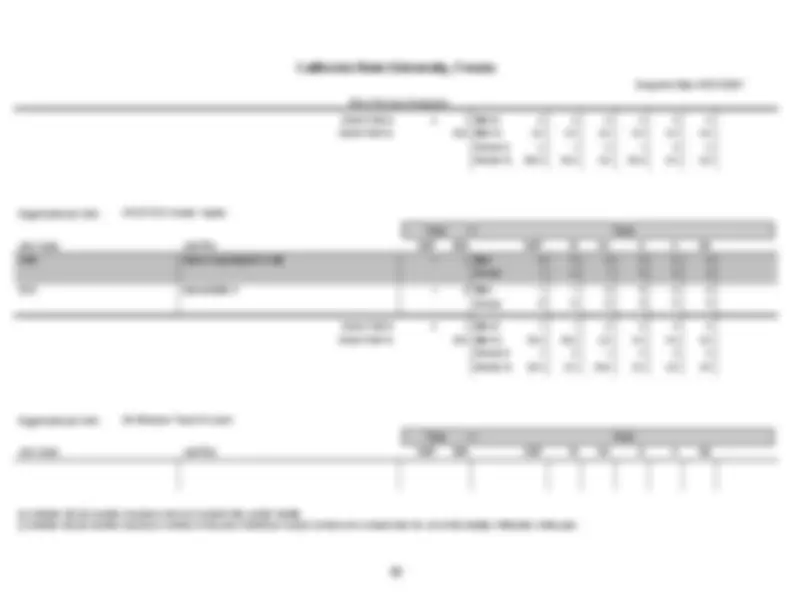
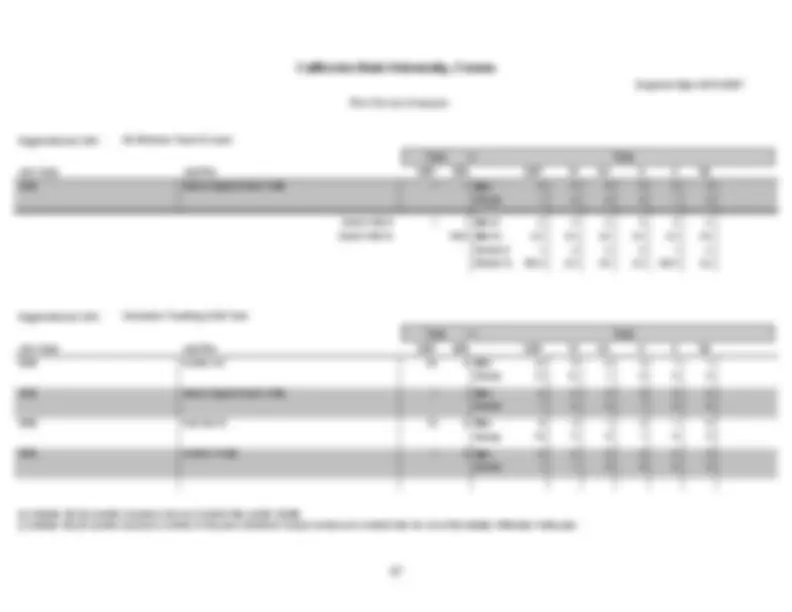
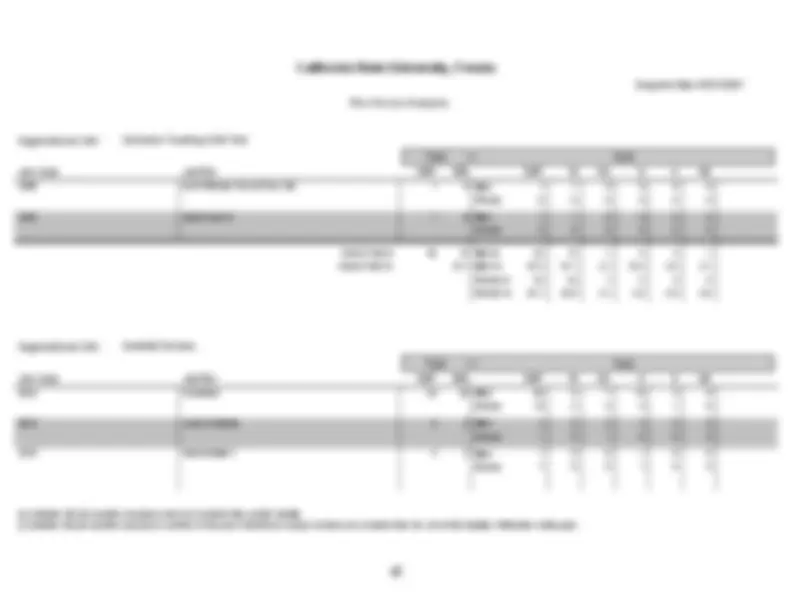
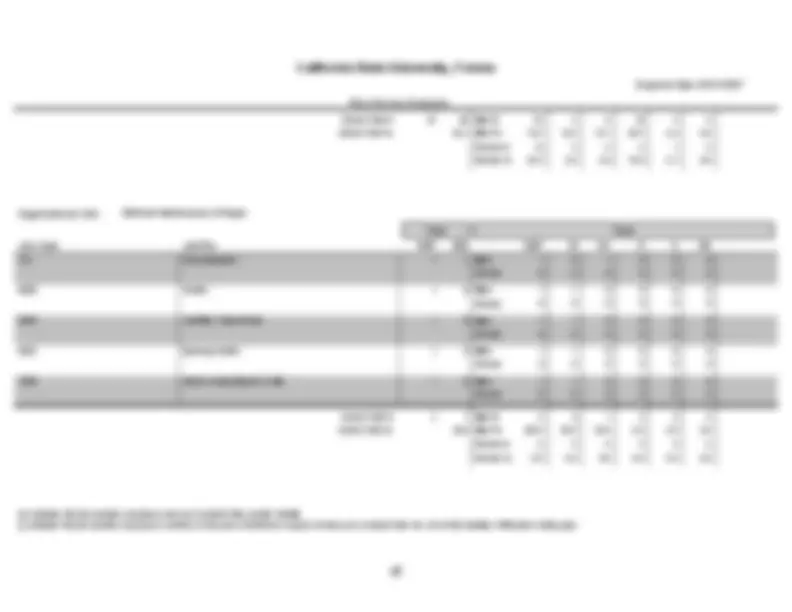
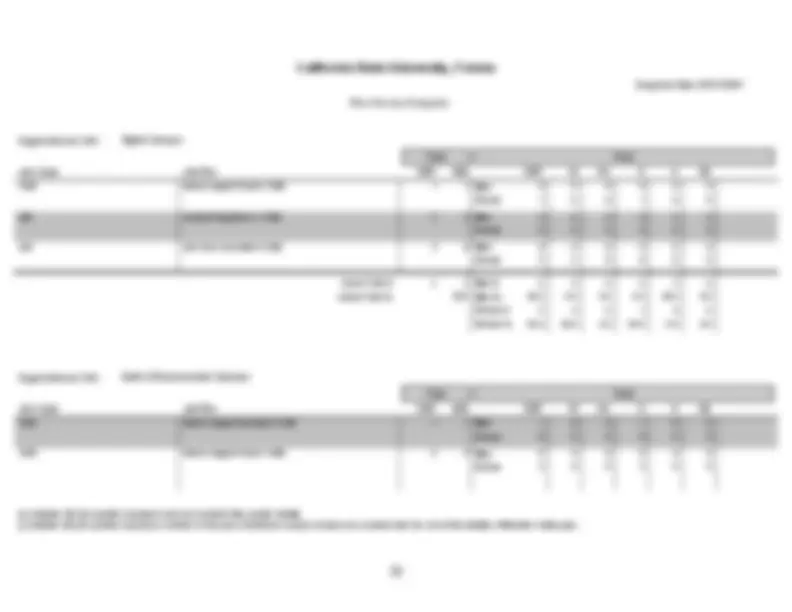
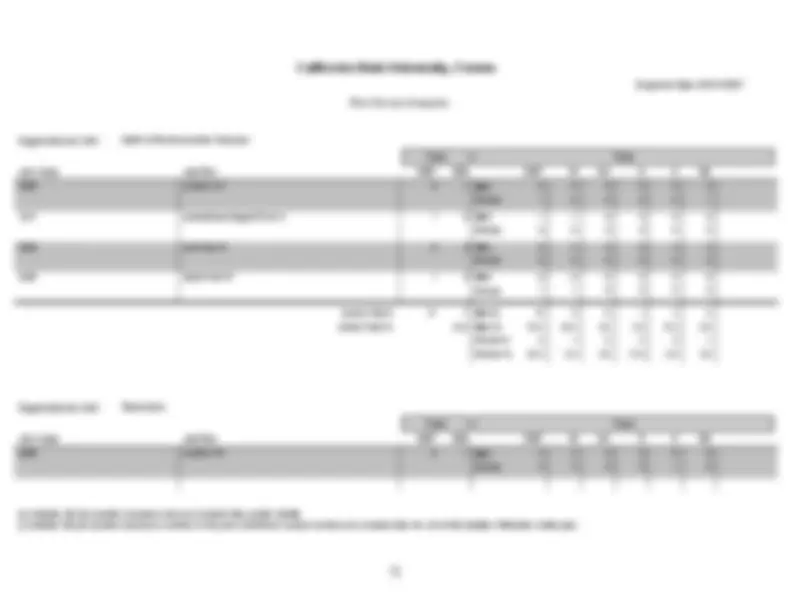
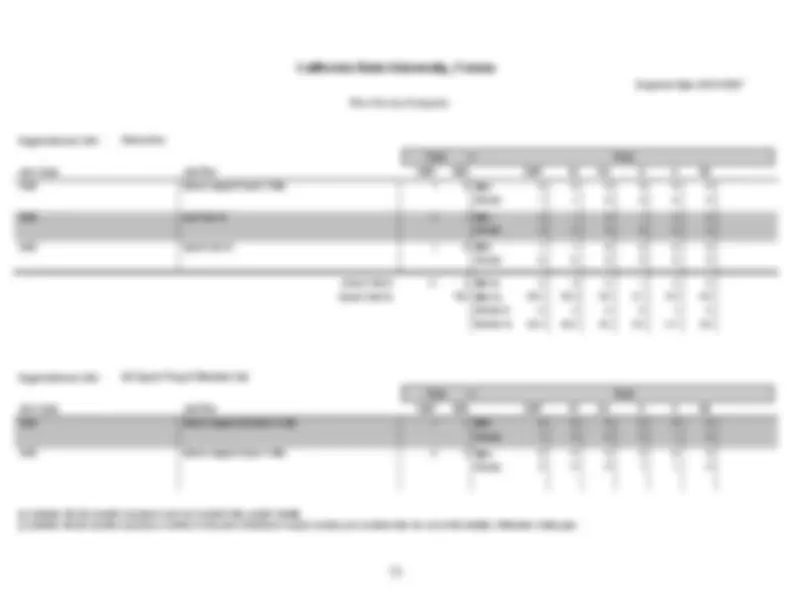
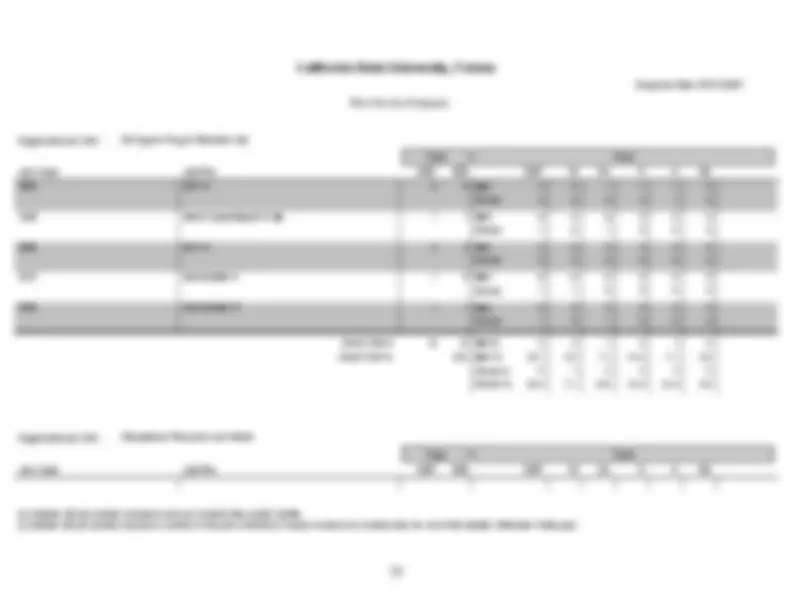

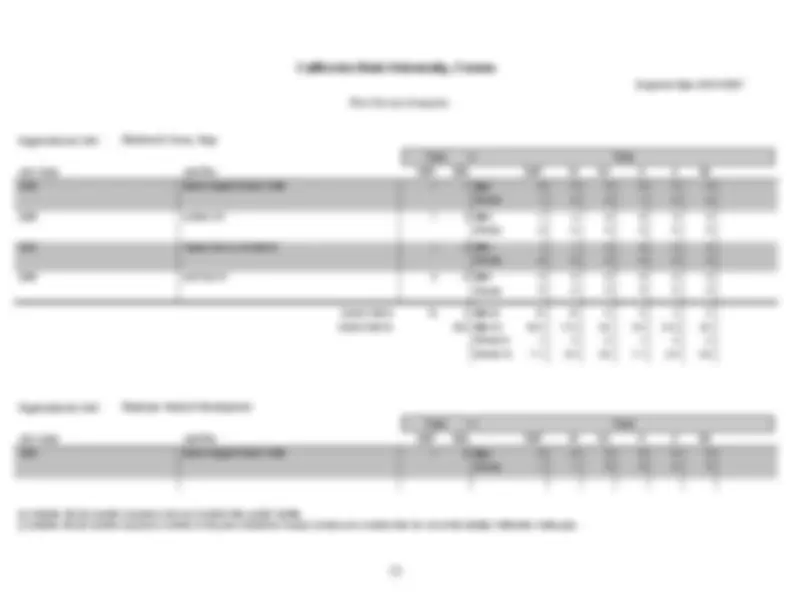
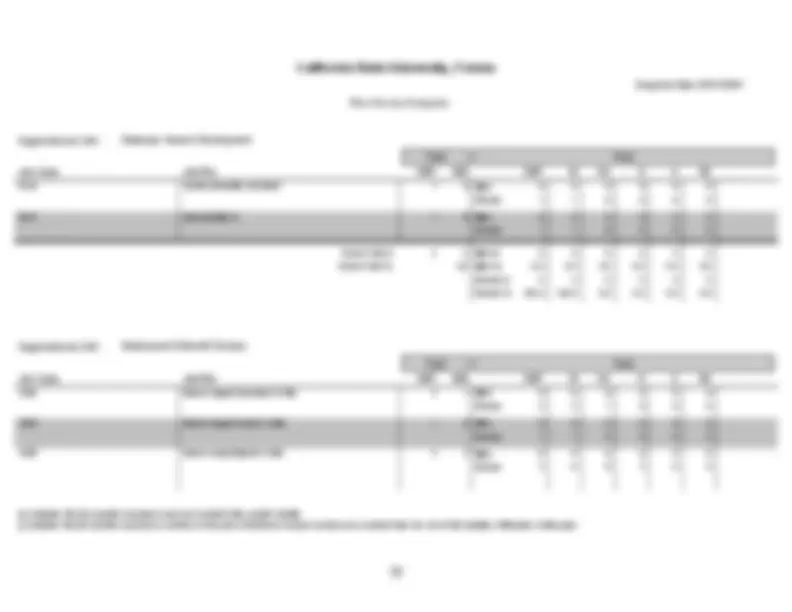


Study with the several resources on Docsity

Earn points by helping other students or get them with a premium plan


Prepare for your exams
Study with the several resources on Docsity

Earn points to download
Earn points by helping other students or get them with a premium plan
Community
Ask the community for help and clear up your study doubts
Discover the best universities in your country according to Docsity users
Free resources
Download our free guides on studying techniques, anxiety management strategies, and thesis advice from Docsity tutors
Material Type: Exam; Professor: Bush; Class: Cellular Biology; Subject: Biology; University: California State University - Fresno; Term: Fall 2011;
Typology: Exams
1 / 370

This page cannot be seen from the preview
Don't miss anything!





























































































for
5241 N. Maple Avenue FRESNO, CA 93740 MainPhoneNumber
August 1st, 2007 - July 31st, 2008
AA/EEO Contact : J.A. Parten Human Resource Director CALIFORNIA STATE UNIVERSITY, FRESNO 5241 N. Maple Avenue FRESNO, CA 93740 OfficerPhoneNumber
(Not for distribution except on a need-to-know basis within CALIFORNIA STATE UNIVERSITY, FRESNO)
This AAP contains confidential information which is subject to the provisions of 18 U.S.C. 1905. Chrysler Corp. v. Brown, 441 U.S. 281, 19 FEP 475 (1979). Copies of this AAP and all related appendices, documents, and support data are made available on loan to the U.S. Government upon the request of said Government on the condition that the Government hold them totally confidential and not release copies to any persons whatsoever. This AAP and its Exhibits and all its supporting documents contain much confidential information which may reveal, directly or indirectly, CALIFORNIA STATE UNIVERSITY, FRESNO's plans for business or geographical expansion or contraction. CALIFORNIA STATE UNIVERSITY, FRESNO considers this AAP to be exempt from disclosure, reproduction, and distribution under the Freedom of Information Act upon the grounds, among others, that such material constitutes (1) personnel files, the disclosure of which would constitute a clearly unwarranted invasion of personal privacy, which are exempt from disclosure under 5 U.S.C. 552(b)(6); (2) confidential, commercial, or financial information, which is exempt from disclosure under 5 U.S.C. 552(b)(4); (3) investigatory records compiled for law enforcement purposes, the production of which would constitute an unwarranted invasion of personal privacy, which are exempt from disclosure under 5 U.S.C. 552(b)(7)(C); and (4) matters specifically exempted from disclosure by statute, which are exempt from disclosure under 5 U.S.C. 552(b)(3). Notice is hereby given of a request pursuant to Title 41 Code of Federal Regulations, Part 60- 60.4(d) that portions of this AAP be kept confidential.
CALIFORNIA STATE UNIVERSITY, FRESNO wishes to make it clear that it does not consent to the release of any information whatsoever contained in this AAP under the Freedom of Information Act or otherwise. If the U.S. Government, or any agency or subdivision thereof, is considering breaching the conditions under which this AAP was loaned to such Government, or is considering a request for release of this AAP under the Freedom of Information Act, a request is hereby made that the Government immediately notify the President of CALIFORNIA STATE UNIVERSITY, FRESNO of any and all Freedom of Information Act requests received by the Government or any other contemplated release of this AAP by the Government which relates to information obtained by the Government from the University. We further request that everyone who has any contact with this AAP or its supporting data treat such information as totally confidential and that such information not be released to any person whatsoever. Retention or disclosure of information relating to identifiable individuals may also violate the Privacy Act of 1974.
CALIFORNIA STATE UNIVERSITY, FRESNO is a publicly owned University which provides undergraduate and graduate degree programs. The University was founded in 1911 in the State of California.
CALIFORNIA STATE UNIVERSITY, FRESNO is a federal government supply and service contractor subject to the affirmative action requirements of Executive Order 11246, the Rehabilitation Act of 1973 as amended, and the Vietnam Veterans' Readjustment Assistance Act of 1974, Section 4212. Because CALIFORNIA STATE UNIVERSITY, FRESNO has $50, or more in annual contracts with the federal government and employs 50 or more employees, we are required to prepare annual written Affirmative Action Plans (AAP's) for minorities and women, for covered veterans, and for persons with disabilities for our headquarters and for each of our branch sales offices. Failure to comply with these laws and their implementing regulations, which are enforced by the Office of Federal Contract Compliance Programs (OFCCP), can result in debarment of the University from future contracts and subcontracts.
Affirmative Action is a term that encompasses any measure adopted by an employer to correct or to compensate for past or present discrimination or to prevent discrimination from recurring in the future. Affirmative Action goes beyond the simple termination of a discriminatory practice.
As stipulated in federal regulations, a prerequisite to the development of a satisfactory Affirmative Action Plan is the evaluation of opportunities for protected group members, as well as an identification and analysis of problem areas inherent in their employment. Also, where a statistical analysis of the employee workforce reveals a numeric disparity between incumbency and availability of minorities or women, an adequate AAP details specific affirmative action steps to guarantee equal employment opportunity. These steps are keyed to the problems and needs of protected group members. For minorities and women, such steps include the development of hiring and promotion goals to rectify the disparity between incumbency and availability. It is toward this end that the following AAP of CALIFORNIA STATE UNIVERSITY, FRESNO was developed.
APPLICABLE AFFIRMATIVE ACTION LAWS AND REGULATIONS
CALIFORNIA STATE UNIVERSITY, FRESNO's AAP for minorities and women (Part I) has been prepared according to Executive Order No. 11246, as amended, and Title 41, Code of Federal Regulations, Part 60-1 (Equal Employment Opportunity Duties of Government Contractors), Part 60-2 (Affirmative Action Programs of Government Non-Construction Contractors; also known as "Revised Order No. 4"), and Part 60-20 (Sex Discrimination Guidelines for Government Contractors).
CALIFORNIA STATE UNIVERSITY, FRESNO has developed separately an Affirmative Action Plan for covered veterans and persons with disabilities (Part II) prepared in accordance with the Rehabilitation Act of 1973, Section 503, as amended and Title 41, Code of Federal
Regulations, Part 60-741 (Affirmative Action Program for Handicapped Persons), the Vietnam Era Veterans' Readjustment Assistance Act of 1974, Section 4212, as amended, and Title 41 Code of Federal Regulations, Part 60-250 (Affirmative Action Program for Disabled Veterans and Other Veterans).
The Veterans Employment Opportunities Act of 1998 (VEOA), Public Law 105-339, effective October 31, 1998, increased the threshold for coverage under VEVRAA from a contract of $10,000, or more to a contract of $25,000 or more; extended the law’s protections to “veterans who served on active duty during a war or in a campaign for which a campaign badge was authorized; and, provides temporary (up to one year) protection to veterans who do not have a service connected disability, did not see action in a foreign war and did not serve during the Vietnam era.
The Jobs for Veterans Act (JFVA), Public Law 107-288, effective December 1, 2003, increased the threshold for coverage under 38 U.S.C. §4212 from $25,000 to $100,000; grants VEVRAA protection to those veterans who, while serving on active duty in the Armed Forces, participated in a United States military operation for which an Armed Forces service medal was awarded pursuant to Executive Order 12985 (62 Fed. Reg. 1209); changes the definition of “recently separated veteran” to include “any veteran during the three-year period beginning on the date of such veteran’s discharge or release from active duty”; changes “Disabled Veterans” to “Disabled Veterans,” expanding the coverage to conform to 38 U.S.C. § 4211 (3); and, following publication of the final regulations, requires contractors to post job listings with their local employment service delivery system.
PROTECTED GROUPS
Coverage under affirmative action laws and regulations applies to:
Women and minorities who are recognized as belonging to or identifying with the following race or ethnic groups: Blacks/African Americans, Hispanics/Latinos, Asians/Pacific Islanders, and American Indians/Alaskan Natives.
Disabled veterans: veterans entitled to compensation for a disability rated at 30 percent or more, or rated at 10 or 20 percent in the case of a veteran who has been determined under section 3106 of Title 38 to have a serious employment disability, or a person who was discharged or released from active duty because of a service-connected disability.
Recently separated veterans: any veteran currently within three-year of discharge or release from active duty.
Veterans who received an “Armed Forces Medal.”
An individual with a disability: a person who has a physical or mental impairment that substantially limits one or more of his/her major life activities; (2) has a record of such impairment, or (3) is regarded as having such an impairment.
This AAP has been designed to bring women and men, members of minority groups, covered veterans, and persons with disabilities into all levels and segments of CALIFORNIA STATE UNIVERSITY, FRESNO's workforce in proportion to their representation in the qualified relevant labor market. California State University, Fresno is strongly committed to the principles of equal employment opportunity and nondiscrimination for all. It has been, and will continue to be, the University’s policy to provide programs, services and benefits, including employment, without regard to race, religion, color, gender, marital status, pregnancy, national origin, age (over 40), mental or physical disability, sexual orientation, special disabled veteran’s status, Vietnam Era or other covered veteran status. Similarly, the University will continue to administer all other personnel action in accordance with this Policy and applicable legal guidelines. The University does not tolerate harassment or discrimination in any form.
This policy applies to all employment actions, and educational opportunities including but not limited to recruitment, hiring, education, upgrading, promotion, transfer, demotion, layoff, recall, termination, rates of pay or other forms of compensation, and selection for training, including apprenticeship, and admission to education programs. To the extent permitted by law, every employee must actively participate in promoting and implementing diversity and equal employment opportunity.
The AAP, therefore, is a detailed, results-oriented set of procedures which, when carried out, results in full compliance with equal employment opportunity requirements through the equal treatment of all people.
The manner in which this is to be accomplished becomes technical and somewhat complicated. There are several reasons for this. First, CALIFORNIA STATE UNIVERSITY, FRESNO is subject to and must address a variety of State and Federal laws and guidelines dealing with equal employment opportunity and affirmative action. These guidelines and requirements are in themselves somewhat technical and complex. In addition, relevant court decisions, which are often useful in interpreting, but sometimes conflicting with these requirements and guidelines, must be taken into account when developing and implementing the AAP. Furthermore, in determining CALIFORNIA STATE UNIVERSITY, FRESNO's current equal employment opportunity and affirmative action position and its desired future achievements, numbers, percentages, statistics, and numerous calculations and computations must come into play.
The technical, legal, and mathematical aspects of the AAP, however, all have one common purpose—to allow us to properly identify three key concepts:
These three concepts are the Affirmative Action Plan.
Workforce Analysis/Lines of Progression
CALIFORNIA STATE UNIVERSITY, FRESNO conducted a workforce analysis to identify employees at CALIFORNIA STATE UNIVERSITY, FRESNO by gender and race/ethnicity in each job title. The data was collected from payroll records dated MAY 31ST, 2007.
Job titles are listed by organizational unit. Job titles are listed from lowest to highest paid. The list includes all job titles, including departmental supervision, exempt, and nonexempt titles. For each job title, the lower threshold of the salary range is provided.
For each job title, CALIFORNIA STATE UNIVERSITY, FRESNO identified the total number of employees, the number of male and female employees, the total number of minority employees, the male and female minority employees, the total number of White, Black, Hispanic, Asian or Pacific Islander, American Indian or Alaskan Native employees, and the male and female employees within each of these race/ethnic groups.
CALIFORNIA STATE UNIVERSITY, FRESNO carefully analyzed the workforce analysis to identify problem areas needing correction, such as concentrations or segregation of minorities or women by organizational unit, job, or pay. Problems, if any, are identified in Chapter 8: Identification of Problem Areas; programs to correct the identified problems are identified in Chapter 9: Action-Oriented Programs.
Lines of Progression
Developed in conjunction with the workforce analysis is information on CALIFORNIA STATE UNIVERSITY, FRESNO's lines of progression. Lines of progression (career ladders/career paths) identify the job titles through which an employee can move to the top of a line. For each line of progression, applicable departments are identified. These are the departments which employ persons in the job titles in the specified line of progression. Some lines of progression are limited to only one department, while others are found throughout several departments.
The lines of progression provide useful information regarding patterns of vertical and horizontal movement throughout our workforce. These patterns will be evaluated to ascertain whether they provide to our employees the optimum career mobility and opportunities for advancement.
See Exhibit 3 for a copy of the Workforce Analysis/Lines of Progression for each organizational unit.
Although the workforce analysis was conducted individually for every job title, after it was completed, job titles were grouped for the comparison of incumbency to availability and for setting goals. There were several reasons for grouping jobs.
Many job titles are so similar in content, that handling them individually in the AAP is not necessary. Grouping together these very similar titles is appropriate for the comparison of incumbency to availability. For many job titles, the availability data that can be collected is limited, and the same data must be used for several related jobs. Therefore, grouping these related titles together is logical. Also, many job titles have so few incumbents in them that identifying disparities between incumbency and availability by job title is meaningless—as problem areas would be identified in terms of fractions of people. By grouping several similar titles and increasing the number of employees involved, a meaningful comparison can be conducted; any identified problem areas are more likely to be in terms of whole people. Consequently, goals established to correct problem areas are also more likely to be in terms of whole people.
The three reasons for grouping job titles all discuss "similar" or "related" jobs. That is the most critical guideline in creating job groups. Above all, the job titles placed into a job group must be more similar or related to each other than the job titles in other job groups.
Job groups must have enough incumbents to permit meaningful comparisons of incumbency to availability and goal setting. Ideally, if a job group is identified as containing a problem area, it should be large enough that a goal of a least one whole person can be established. No minimum size has been established for this purpose, however, since it is dependent not only on the size of the job group, but also on the size of the availability percentage and the number of minorities or women already employed in the job group.
It may not be possible for a smaller contractor's job groups to meet the guideline of not crossing EEO categories. While there are usually two or more job groups within each EEO-1 or EEO- category, for smaller contractors some or all of their job groups may correspond to EEO categories.
CALIFORNIA STATE UNIVERSITY, FRESNO did not combine job titles with different content, wages, or opportunities if doing so would have obscured problem areas (e.g., job groups which combine jobs in which minorities or women are concentrated with jobs in which they are underrepresented).
"Availability" is an estimate of the proportion of each sex and race/ethnic group available and qualified for employment at CALIFORNIA STATE UNIVERSITY, FRESNO for a given job group in the relevant labor market during the life of the AAP. Availability indicates the approximate level at which each race/ethnic and sex group could reasonably be expected to be represented in a job group if CALIFORNIA STATE UNIVERSITY, FRESNO's employment decisions are being made without regard to gender, race, or ethnic origin. Availability estimates, therefore, are a way of translating equal employment opportunity into concrete numerical terms. Correct comparisons of incumbency to availability, worthwhile and attainable goals, and real increases in employment for problem groups depend on competent and accurate availability analyses. With valid availability data, we can compare the percentages of those who could reasonably be expected to be employed versus our current employment (from the workforce analysis), identify problem areas or areas of deficiency, and establish goals to correct the problems.
Steps in Comparison of Incumbency to Availability
Identify Availability Factors
The following availability factors are required of federal government contractors for consideration when developing availability estimates for each job group:
a. Local labor area: An employee residence zip code analysis was conducted to identify the local labor areas: Fresno County. See Exhibit 5 for a copy of the Zip Code Analysis. b. Reasonable labor area: National
Assign Internal and External Factor Weights: Weights were assigned to each factor for each job group. A combination of historical data and experience were used to determine the weights. Weights were never assigned in an effort to hide or reduce problem areas.
Identify Final Availability: Weights were multiplied by the component-specific data to produce weighted data for each component. Weighted data for each component was summed. This produced a final availability estimate for each sex and race/ethnic group, as well as for minorities in the aggregate.
See Exhibit 6 for a copy of the Final Availability reports for each job group.
Once final availability estimates were made for each job group, CALIFORNIA STATE UNIVERSITY, FRESNO compared the percentage of incumbents in each job group to their corresponding availability. A comparison was made between the percentage employed as of MAY 31ST, 2007 and that group's final availability.
See Exhibit 7 for a copy of the Comparison of Incumbency to Availability reports for each job group.
41 C.F.R. § 60-2.17(a)
As part of its efforts to ensure equal employment opportunity to all individuals, CALIFORNIA STATE UNIVERSITY, FRESNO has designated specific responsibilities to various staff to ensure the AAP focuses on all components of the employment system. To that end, the President, the Vice President and Provost, the Human Resource Director, and those employed as supervisors and managers have undertaken the responsibilities described below.
President
The primary responsibility and accountability for implementing the AAP rests with the President, John D. Welty. This person is responsible, through the Vice President and Provost and the Human Resource Director, for adherence to CALIFORNIA STATE UNIVERSITY, FRESNO's policy of equal employment opportunity and affirmative action. This role includes, but is not limited to, the following duties:
Vice President and Provost
As the Vice President and Provost, Dr. Jeronima Echeverria is responsible for overall supervision of the AAP. The Manager ensures, through the Human Resource Director and department managers and supervisors that all relevant policies and procedures are adhered to. Successful implementation of this program is a basis for evaluating Dr. Jeronima Echeverria's effective work performance. The Manager's responsibilities include, but are not limited to, the following:
Human Resource Director
As the Human Resource Director, J.A. Parten is responsible for ensuring the directives of the President and Vice President and Provost are implemented. The Human Resource Director's duties include, but are not limited to, the following:
Equity Compliance Coordinator
The Equity Compliance Coordinator monitors the recruiting process on a daily, or as needed, basis and provides training to those involved in the process. The responsibilities of the Coordinator include, but are not limited to:
Members of the Campus Community
Employees, students and visitors are responsible for conducting themselves in a manner that ensures others are able to work in an atmosphere free from unlawful discrimination and harassment. These duties include, but are not limited to, the following:
41 C.F.R. § 60-2.17(b)
Terminology
The phrases “comparison of incumbency to availability,” and “problem area” appearing in this chapter are terms CALIFORNIA STATE UNIVERSITY, FRESNO is required by government regulations to use. The criteria used in relation to these terms are those specified by the government. These terms have no independent legal or factual significance. Although CALIFORNIA STATE UNIVERSITY, FRESNO will use the terms in good faith in connection with its AAP, such use does not necessarily signify the University agrees that these terms are properly applied to any particular factual situation and is not an admission of non-compliance with EEO laws, regulations, and objectives. Whenever the term “goal” is used, it is expressly intended that it “should not be used to discriminate against any applicant or employee because of race, color, religion, gender, or national origin,” as stated in Title 41 Code of Federal Regulations, Part 60-2.16(e).
Based on analyses of each job group, areas of concern have been identified and are discussed below. In addition to comparing incumbency to availability within job groups, CALIFORNIA STATE UNIVERSITY, FRESNO has conducted studies to identify problem areas in each of its selection procedures (i.e., hires, promotions, and terminations) as well as by organizational unit. CALIFORNIA STATE UNIVERSITY, FRESNO will continue to monitor and update these studies during each AAP year. In each case where potential problem areas have been identified, affirmative actions, as appropriate, will be taken consistent with any of the action-oriented programs described in Chapter 9 of this AAP.
Goals are established within each of the job groups at no less than the current availability data for the job group.
41 C.F.R. § 60-2.17(b)(1): Workforce by Organizational Unit and Job Group
An analysis of minority and female distribution within each organizational unit was accomplished by a thorough investigation of the Workforce analysis. See Exhibit 3 for a copy of the Workforce Analysis by organizational unit.
An analysis of minority and female utilization within each job group was accomplished by a thorough investigation of the Comparison of Incumbency to Availability reports. See Exhibit 7 for a copy of the Comparison of Incumbency to Availability reports for each job group.
41 C.F.R. § 60-2.17(b)(2): Personnel Activity
Applicant flow, hires, promotions, and terminations were analyzed by job group. An analysis of